Remarkable Recovery: Samsung Crisis Management Case Study
Have you ever wondered how a global tech giant like Samsung managed to navigate a major crisis and bounce back stronger?
In the world of corporate governance, effective crisis management can be the difference between irreparable damage to a company’s reputation and a successful recovery.
In this blog post, we delve into a Samsung crisis management case study to learn about exploding batteries to the intricate strategies employed to restore trust.
Samsung’s journey offers valuable insights into the intricacies of crisis management in the digital age.
Join us as we explore the key lessons learned and best practices from this high-stakes situation, shedding light on the remarkable recovery efforts that propelled Samsung forward.
Let’s learn about sailing through tough times through Samsung crisis management case study
Background of Samsung History and growth of Samsung as a global conglomerate
Samsung, founded in 1938 by Lee Byung-chul, started as a small trading company in South Korea. Over the years, it steadily expanded into various industries, such as textiles, insurance, and retail.
In the 1960s, Samsung ventured into electronics, marking the beginning of its transformation into a global conglomerate.
With a focus on technological innovation and a commitment to quality, Samsung rapidly gained recognition for its consumer electronics products, including televisions and appliances.
Throughout the 1980s and 1990s, Samsung significantly diversified its business portfolio, entering the semiconductor, telecommunications, and shipbuilding industries.
This diversification strategy helped Samsung become a key player in multiple sectors, solidifying its position as a global leader. Notably, Samsung’s semiconductor division became one of the largest chip manufacturers in the world, supplying components to various electronic devices worldwide.
Samsung’s ascent continued in the 2000s, driven by its successful expansion into the mobile phone market. The introduction of the Galaxy series, powered by the Android operating system, catapulted Samsung to the forefront of the smartphone industry.
The company’s innovative designs, cutting-edge features, and aggressive marketing campaigns contributed to its rise as a major competitor to Apple’s iPhone.
With its global reach, Samsung has consistently ranked among the world’s largest technology companies, epitomizing South Korea’s economic prowess and technological advancements.
Samsung has also been considered one the best companies that successfully managed and implemented change initiatives.
Overview of Samsung’s position in the technology industry
In the consumer electronics segment, Samsung has established itself as a dominant force. Its diverse product lineup encompasses televisions, smartphones, tablets, wearables, home appliances, and audio devices.
The Galaxy series of smartphones, in particular, has enjoyed immense popularity and has emerged as a fierce competitor to other industry giants. Samsung’s televisions are also highly regarded for their cutting-edge display technologies, such as QLED and MicroLED.
The company’s advancements in semiconductor technology have contributed to faster computing speeds, increased storage capacities, and improved energy efficiency.
Samsung’s influence extends beyond consumer electronics and semiconductors. The company is actively involved in telecommunications infrastructure, including the development of 5G networks and the production of network equipment.
Samsung has also made notable strides in the realm of software solutions, including its own mobile operating system, Tizen, and various software platforms for smart devices.
Samsung Galaxy Note 7 Crisis
The Note 7 battery issue marked a significant crisis for Samsung, leading to a widespread recall of the flagship smartphone and causing considerable damage to the company’s reputation.
The crisis began in September 2016 when reports emerged of Note 7 devices catching fire or exploding due to faulty batteries. These incidents raised concerns about consumer safety and triggered a wave of negative publicity for Samsung.
Upon receiving initial reports of battery-related incidents, Samsung initially responded by issuing a voluntary recall of the Note 7 in September 2016. The company acknowledged the problem and expressed its commitment to addressing the issue promptly and effectively.
Samsung attributed the battery malfunctions to a manufacturing defect, specifically a flaw in the design that caused a short circuit.
To ensure customer safety, Samsung advised Note 7 owners to power down their devices and refrain from using them. The company swiftly implemented measures to exchange the affected devices, offering customers the option to either replace their Note 7 with a new unit or receive a refund.
Samsung also collaborated with mobile network operators and retail partners to facilitate the recall process.
In its initial response, Samsung took steps to communicate with customers and the public about the issue. The company published official statements expressing regret for the inconvenience caused and assuring customers of its commitment to resolving the problem. Samsung emphasized its dedication to quality and safety, promising to conduct thorough investigations and implement necessary improvements to prevent similar incidents in the future.
Media coverage and public perception during the crisis
During the Note 7 crisis, media coverage played a significant role in shaping public perception and amplifying the negative impact on Samsung’s brand.
The crisis received extensive coverage from both traditional media outlets and online platforms, leading to widespread awareness and public scrutiny. Here’s an overview of media coverage and its influence on public perception:
- News Outlets: Major news organizations across the globe reported on the Note 7 battery issue, highlighting incidents, the recall, and subsequent developments. Television news segments, newspapers, and online news articles extensively covered the crisis , emphasizing the potential safety risks and consumer concerns. The constant media attention contributed to the widespread dissemination of information and increased public awareness of the issue.
- Online Platforms and Social Media: Social media platforms played a pivotal role in the crisis, enabling the rapid spread of information and user-generated content. Users took to platforms such as Twitter, Facebook, and YouTube to share their experiences, express concerns, and criticize Samsung’s handling of the situation. Viral videos, photos, and personal accounts of Note 7 incidents gained traction, further fueling negative sentiment and influencing public perception.
- Expert Analysis and Opinions: Alongside news coverage, experts and industry analysts provided their insights and opinions on the crisis. Their assessments of Samsung’s response, the potential causes of the battery issue, and the implications for the company’s brand reputation contributed to the overall narrative. Expert opinions had the power to sway public perception and shape the understanding of the crisis.
- Consumer Forums and Discussion Platforms: Online forums and discussion boards dedicated to technology and consumer experiences became hubs for discussions surrounding the Note 7 crisis. Consumers shared their frustrations, exchanged information, and warned others about potential risks. These platforms served as gathering places for individuals affected by the crisis and amplified the negative sentiment surrounding Samsung’s brand.
Financial implications and losses incurred by Samsung
The Note 7 crisis had significant financial implications for Samsung, resulting in substantial losses for the company. Here are some of the key financial impacts experienced by Samsung as a result of the crisis:
- Recall and Replacement Costs: The recall and replacement process incurred significant costs for Samsung. The expenses involved in collecting and replacing over 2 million of Note 7 devices, including logistics, shipping, and refurbishment, were substantial. The costs also encompassed the testing and certification of replacement devices to ensure their safety. The total recall cost was estimated at $5.3 billion.
- Decline in Sales and Market Share: The crisis had a detrimental impact on Samsung’s sales and market share in the smartphone industry. As consumer confidence in the Note 7 and Samsung’s brand reputation declined, potential buyers shifted their preferences to alternative smartphone options. The decline in sales of the Note 7, coupled with the negative impact on the perception of other Samsung products, led to a loss of market share for the company.
- Stock Price Decline: The Note 7 crisis had an immediate impact on Samsung’s stock price. News of the battery issue, recalls, and subsequent negative media coverage led to a decline in Samsung’s stock value. Samsung shares fell approximately to 7 percent right after 2 months of the crisis.

Crisis Management Strategy Employed by Samsung
Following are the key aspects of Samsung Galaxy Note 7 crisis management strategy:
Immediate actions taken by Samsung to address the crisis
In the face of the Note 7 crisis, Samsung swiftly implemented a range of immediate actions to address the situation and mitigate the impact on consumers and the company’s brand reputation. Here are some of the key actions taken by Samsung:
- Voluntary Recall: As soon as reports of battery issues emerged, Samsung initiated a voluntary recall of the Note 7. This proactive step demonstrated the company’s commitment to consumer safety and willingness to take responsibility for the problem.
- Temporary Production Halt: To address the root cause of the battery issue, Samsung temporarily halted production of the Note 7. This decision aimed to prevent further distribution of potentially defective devices and allow for thorough investigations and corrective measures.
- Transparent Communication: Samsung made efforts to communicate openly and transparently about the crisis. The company issued official statements and press releases acknowledging the problem, expressing regret for the inconvenience caused, and reassuring customers of its commitment to resolving the issue. Transparent communication was crucial in maintaining trust and providing timely updates to affected consumers.
- Collaboration with Authorities: Samsung collaborated closely with regulatory authorities and industry experts to investigate the battery issue comprehensively. By engaging external expertise, the company aimed to identify the root cause and develop effective solutions. This collaboration demonstrated Samsung’s commitment to finding the best possible resolution.
- Customer Support and Safety Guidelines: Samsung provided clear instructions to consumers regarding the use of Note 7 devices, emphasizing the importance of safety. The company advised customers to power down their devices, participate in the recall, and utilize alternative devices in the interim. This approach prioritized customer safety and aimed to prevent further incidents.
- Increased Battery Testing and Safety Measures: Samsung implemented enhanced battery testing procedures and stringent safety measures to prevent similar incidents in the future. The company adopted more rigorous quality control processes, including additional safety certifications and testing standards, to ensure the highest levels of product safety.
Communication strategies employed by Samsung
Samsung employed various communication strategies to address the Note 7 crisis and manage the impact on its brand reputation. Effective communication was crucial in maintaining transparency, addressing consumer concerns, and rebuilding trust. Here are some of the communication strategies employed by Samsung:
- Official Statements and Press Releases: Samsung issued official statements and press releases to provide updates on the progress of the recall, investigations, and corrective actions. These statements expressed remorse for the inconvenience caused and reiterated the company’s commitment to customer safety. Clear and concise communication helped keep customers informed and reassured them that Samsung was actively working to resolve the issue.
- Direct Customer Communication: Samsung directly communicated with customers to provide instructions and updates on the recall process. The company utilized various channels such as email, SMS messages, and notifications through its official website and smartphone apps. This direct communication ensured that customers received important information and guidance regarding the recall and replacement program.
- Social Media Engagement: Samsung actively engaged with customers and the public on social media platforms, including Twitter, Facebook, and YouTube. The company responded to customer queries, addressed concerns, and provided updates on the progress of the recall. By engaging in two-way communication, Samsung demonstrated its willingness to listen, respond, and provide assistance to affected customers.
- Collaboration with Industry Experts: Samsung collaborated with industry experts, battery manufacturers, and regulatory authorities to investigate the root cause of the battery issue. This collaboration was communicated to the public, showcasing Samsung’s commitment to finding solutions and ensuring that the necessary expertise was involved in resolving the crisis.
- Advertisements and Marketing Campaigns: Samsung launched advertising and marketing campaigns focused on rebuilding trust and emphasizing its commitment to quality and safety. These campaigns highlighted Samsung’s dedication to addressing the issue and regaining consumer confidence. Advertisements often emphasized the company’s rigorous testing procedures and quality control measures to assure customers of the safety of its products.
- CEO Apology: Samsung’s CEO issued a public apology, taking personal responsibility for the crisis and expressing regret for the inconvenience and concern caused to customers. The CEO’s apology aimed to convey sincerity, empathy, and a commitment to rectifying the situation, while also reinforcing the company’s accountability and determination to regain trust. The apology was published on a full page in 03 major US newspapers – the Wall Street Journal, The Washington Post and The New York Times.
Collaborations with regulatory authorities and industry experts
Samsung worked closely with government agencies and regulatory bodies in various countries where incidents related to the Note 7 were reported. The company shared information, conducted investigations, and cooperated with authorities to ensure compliance with safety regulations and guidelines. Collaboration with government agencies helped align efforts to address the crisis and establish industry-wide safety standards.
In the United States, Samsung collaborated with the CPSC, an independent federal agency responsible for ensuring the safety of consumer products. Samsung worked together with the CPSC to investigate the battery issue and coordinate the recall process. This collaboration ensured that the recall efforts followed established safety protocols and provided consumers with accurate information.
Samsung collaborated with battery manufacturers to investigate the specific manufacturing defects that caused the battery issue. The company worked closely with these partners to analyze the battery designs, manufacturing processes, and quality control measures. By involving battery manufacturers in the investigation, Samsung aimed to identify the root cause and implement corrective actions to prevent similar issues in the future.
Samsung engaged independent testing labs to conduct thorough assessments of the Note 7 batteries and verify the effectiveness of corrective measures. These labs specialized in battery testing and certification, providing expertise and unbiased evaluation of the battery performance and safety. Collaboration with independent testing labs helped validate Samsung’s efforts to address the battery issue and instill confidence in the effectiveness of the solutions.
Post-Crisis Recovery and Rebuilding
Samsung implemented more stringent quality control measures across its product development and manufacturing processes. This included enhanced battery testing protocols, increased inspections, and stricter quality assurance standards. By demonstrating a commitment to producing reliable and safe products, Samsung aimed to rebuild customer trust.
Extended Warranty and Customer Support: Samsung extended warranty periods for existing and new devices, including the Note 7, to provide customers with added assurance. The company also enhanced its customer support services, ensuring that customers could easily access assistance, product information, and technical support. These initiatives aimed to demonstrate Samsung’s commitment to customer satisfaction and support.
Launch of subsequent product lines and their impact on brand perception
Following the Note 7 crisis, Samsung launched subsequent product lines, including flagship smartphones like the Galaxy S8 and subsequent iterations. These launches played a crucial role in shaping brand perception and rebuilding trust. Key factors that influenced brand perception and the recovery process include:
- Emphasis on Safety and Quality: Samsung placed a strong emphasis on safety and quality in its subsequent product launches. The company implemented rigorous testing procedures and introduced new safety features to ensure the reliability and safety of its devices. By highlighting these improvements, Samsung aimed to regain customer trust and reassure them of its commitment to producing high-quality products.
- Positive User Experience: Samsung focused on delivering positive user experiences with its new product lines. This included improvements in design, performance, and functionality to enhance customer satisfaction. By providing users with exceptional products, Samsung aimed to rebuild its reputation and generate positive word-of-mouth, contributing to brand recovery.
- Brand Messaging and Marketing: Samsung’s marketing efforts during subsequent product launches were carefully crafted to reinforce positive brand associations and regain customer trust. The company emphasized innovation, customer-centricity, and the commitment to quality and safety. Marketing campaigns highlighted features, benefits, and technological advancements to create a positive brand image and overcome the negative perceptions associated with the Note 7 crisis.
Final Words
Samsung’s handling of the Note 7 crisis serves as a case study in crisis management. Despite the significant financial and reputational setbacks, the company took proactive steps to address the crisis, regain customer trust, and prevent similar incidents in the future.
The Samsung crisis management case study highlights the importance of swift and transparent communication, customer-centric actions, and continuous improvement in product safety and quality. By effectively addressing the crisis, Samsung was able to navigate the challenging situation and rebuild its brand, reaffirming its position as a leading global technology company.
Overall, the Samsung crisis management case study provides valuable insights into how a company can recover from a major setback, restore customer trust, and strengthen its position in the market through strategic actions and a relentless commitment to customer satisfaction and product excellence.
About The Author
Tahir Abbas
Related posts.

05 Most Common Negative Effects of Resistance to Change

Gleicher’s Formula for Change Management – Benefits & Limitations

What is DICE Framework in Change Management?

- About / Contact
- Privacy Policy
- Alphabetical List of Companies
- Business Analysis Topics
Samsung’s Generic Competitive Strategy & Growth Strategies

Samsung’s generic competitive strategy and intensive growth strategies set business goals for technological innovation as a critical factor in developing competitive advantages. Headquartered in Korea, the conglomerate competes with technology-intensive firms, such as Apple , Google (Alphabet) , Microsoft , Sony , and Intel , which create strong competitive forces, as determined through a Five Forces analysis of Samsung. The industry environment imposes aggressive competitive behavior that typically involves rapid technological innovation for product differentiation, as seen in the evolution of smartphones available in the global market. To effectively compete, Samsung’s generic competitive strategy and growth strategies must involve investment in technological innovation. The resulting competitive advantages enable the company to keep its competitive position as one of the best performers in the semiconductors, consumer electronics, and home appliances industries. Samsung’s generic competitive strategy and intensive strategies for growth are suited to the current business environment and the strategic positioning of the multinational organization’s operations.
The generic competitive strategy and intensive growth strategies of Samsung Group permeate its entire organization, influencing the strategic choices and implementations of its divisions and subsidiaries. The Group’s unitary leadership is responsible for the corporate strategic direction and competitive advantages of the conglomerate and its technology-focused subsidiaries. Samsung’s generic competitive strategy and intensive growth strategies are observable in product design, marketing strategies, and the business organizational development direction of subsidiaries.
Samsung’s Generic Competitive Strategy (Porter Model)
Samsung applies broad differentiation as its generic competitive strategy. Based on Michael E. Porter’s competitive strategy model, the strategic objective of broad differentiation is to maintain competitive advantage by providing unique (or differentiated) products targeting a wide market, which in this case is industry-wide, involving practically every person or group that buys smartphones, laptops, and other equipment. To achieve Samsung’s strategic plans for growth and expansion in the global market, this generic competitive strategy requires the application of product development as a main intensive growth strategy to compete with other technology firms.
Samsung’s investments in product development are a strategic implication of differentiation as its generic competitive strategy. For example, the company invests in technological innovation to support the competitive advantage of its products in the consumer electronics market. Another implication of this generic competitive strategy is Samsung’s marketing mix (4Ps) and related strategies that promote products as unique or different alternatives to the majority of competitors. This marketing approach and technological innovation sustain the corporation’s competitive advantages and value chain effectiveness in satisfying customers’ needs in consumer electronics, computing technology, and home appliances.
Other generic competitive strategies, such as cost leadership, differentiation focus, and cost focus, are also applied in Samsung’s operations, but to a limited extent. Cost focus leads to the company’s being the best-cost provider in some segments of the semiconductor and electronic components markets. The limited application of cost focus still comes with innovation standards that reflect Samsung’s main generic competitive strategy of broad differentiation. These generic strategies align with the company’s intensive growth strategies to succeed in sustaining the technology firm’s competitive advantages.
Samsung’s Intensive Growth Strategies (Ansoff Matrix)
Market Penetration (Primary) . Samsung’s revenue growth depends on market penetration as the primary intensive strategy. In Igor Ansoff’s matrix, the strategic objective of market penetration is to grow the technology business by increasing its revenues from the sale of current products in current markets, such as the European Union’s consumer electronics market, where the corporation already has operations. Competitive advantages and business strengths identified in the SWOT analysis of Samsung combat negative forces from competition in these markets. As an intensive growth strategy, market penetration depends on the effectiveness of the generic competitive strategy of broad differentiation, in terms of how the company creates technologically innovative products that are differentiated enough to attract target customers in current or existing markets.
Product Development (Secondary) . Considering the emphasis of product superiority in Samsung’s corporate mission and vision statements , product development is a major intensive growth strategy of the enterprise. A strategic objective of product development in this case is to grow the business through new products, such as new electronic gadgets. Also, this intensive strategy grows Samsung’s operations through iterative innovation, which leads to improved versions or variants of existing products. For example, the company regularly rolls out new smartphone models, similar to what competitors are doing in their product development strategy. The implementation of product development as an intensive growth strategy is based on Samsung’s generic competitive strategy of differentiation, which requires product development for uniqueness that differentiates the business from the competition. Economies of scope based on the conglomerate’s various subsidiaries support product development and competitive advantage by providing technological expertise and material inputs from the subsidiaries. Samsung’s organizational culture (work culture) affects human-resource support for operational effectiveness, value chain efficiencies, supply chain management, and other business activities that fulfill the strategic objectives of product development.
Market Development . The global scale of Samsung’s operations makes market development a minor intensive strategy for business growth. Market development’s strategic objective is to enter new markets using the company’s existing products, such as introducing new Galaxy tablets in Latin American markets after these products’ introduction in the United States. As an intensive growth strategy, market development’s success depends on product value and competitive advantage, which in this case comes with Samsung’s generic strategy of differentiation via technological innovation. For example, effective innovation for cutting-edge technological design makes the corporation’s products more competitive when rolled out in target markets. With this intensive growth strategy, introducing products to new markets may come with changes in the geographical units of Samsung’s organizational structure (company structure) .
Diversification . Samsung’s diversified business operations maintain multiple revenue channels and spread risk across industries and markets. This intensive growth strategy’s implementation is infrequent in the technology conglomerate, considering regulatory hurdles and other barriers. With the strategic objective of establishing new profitable businesses, the diversification strategy grows Samsung typically through acquisitions of smaller firms, such as Harman International Industries. The minor role designation of this intensive growth strategy limits the risks of establishing new business operations. In implementing diversification, the generic competitive strategy of differentiation is also applied for competitiveness and strategic alignment among Samsung subsidiaries’ business operations.
Some Considerations – Samsung’s Generic Competitive Strategy & Intensive Growth Strategies
Samsung’s generic competitive strategy and intensive growth strategies direct the organization’s growth and development. Differentiation plays a major role in building the company’s competitive advantage, although other generic competitive strategies, such as cost leadership and focus strategies, also support the technology enterprise and its competitiveness. Samsung’s operations management strategies and administration must align with the differentiation generic competitive strategy and the intensive growth strategies to support business growth while competing with aggressive multinational companies.
- López, D., & Oliver, M. (2023). Integrating innovation into business strategy: Perspectives from innovation managers. Sustainability, 15 (8), 6503.
- Samsung – Brand Identity .
- Samsung R&D Center .
- Samsung Catalyst Fund .
- Taherdoost, H. (2023). An overview of trends in information systems: Emerging technologies that transform the information technology industry. Cloud Computing and Data Science , 1-16.
- U.S. Department of Commerce – International Trade Administration – Software and Information Technology Industry .
- Copyright by Panmore Institute - All rights reserved.
- This article may not be reproduced, distributed, or mirrored without written permission from Panmore Institute and its author/s.
- Educators, Researchers, and Students: You are permitted to quote or paraphrase parts of this article (not the entire article) for educational or research purposes, as long as the article is properly cited and referenced together with its URL/link.
- SMB Technology
- Mobile Productivity
- Mobile Security
- Computing & Monitors
- Memory & Storage
- Digital Signage
- Trending Tech
- Hospitality
- Manufacturing
- Transportation
- Food & Beverage
- Live Events & Sports
- Spectaculars & DOOH
- Gaming & Esports
- White Papers
- Infographics
- Assessments & Calculators
Case Studies
- About Samsung Insights
- Our Experts
Subscribe to Insights
Get the latest insights from Samsung delivered right to your inbox.
See our Privacy Policy
Samsung Business Insights
All Case Studies

Houston Astros up the score at Minute Maid Park with state-of-the-art Samsung displays
The Houston Astros recently upgraded with a state-of-the-art Samsung LED scoreboard and video displays at Minute Maid Park to enhance fan experience and engagement.

Millard Public Schools level up their technology game with Samsung digital displays
At Millard Public Schools in Omaha, Nebraska, Samsung displays with ScorevisionLE (SVLE) software amplify the middle school experience, in both competitive programming and fan engagement.

The Wall powers collaborative design at Lucid Motors
While reviewing new designs, the design team at Lucid Motors benefits from the high-definition image quality and color resolution on Samsung’s The Wall.

Hilton Waikiki Beach welcomes and wows guests with The Wall
Located above the main lobby bar, Samsung’s The Wall in the Hilton Waikiki enhances the experience for both guests and locals. Hospitality TVs in guest rooms and other Samsung displays throughout the property elevate the property.

Buona Beef selects Samsung Kiosk for its digital transformation
Buona Beef, a renowned Chicago brand, added Samsung Kiosks to their locations to increase sales and efficiency of service.

West Sayville Fire Department leads the way with interactive displays
Samsung digital signage throughout the West Sayville Fire Department improves operations, communications, and productivity for all its members.

Miami high school’s connected campus elevates education and engagement
College preparatory Christopher Columbus High School recently outfitted their campus with Samsung display technology to create a connected campus. Interactive whiteboards in the classroom promote effective, collaborative learning, while digital signage throughout the campus streamline communication for all.

The Wall brings digital excellence to Syracuse University
The S.I. Newhouse School of Public Communications at Syracuse University installed Samsung's The Wall to provide a wow factor to current and prospective students.

Stevens Institute of Technology gets on board with interactive boards
Stevens Institute of Technology in Hoboken, NJ uses Samsung interactive whiteboards throughout classrooms and meeting rooms for hybrid classrooms and in-person collaboration.

The Wall brings design at the Hyundai America Technical Center to life
The Wall's MicroLED technology gives designers at Hyundai America Technical Center true to life renditions of their design.
- Harvard Business School →
- Faculty & Research →
- June 2005 (Revised February 2009)
- HBS Case Collection
Samsung Electronics
- Format: Print
- | Pages: 26
More from the Authors
- Faculty Research
Global Strategic Management
- April 2013 (Revised November 2013)
Microsoft in Korea
The unfairness trap: a key missing factor in the economic theory of discrimination.
- Global Strategic Management By: Jordan I. Siegel
- Microsoft in Korea By: Jordan I. Siegel and Lynn Pyun
- The Unfairness Trap: A Key Missing Factor in the Economic Theory of Discrimination By: Jordan I. Siegel, Naomi Kodama and Hanna Halaburda
Design Strategy at Samsung Electronics: Becoming a Top-Tier Company
By: Karen J. Freeze, Kyung-won Chung
Samsung Electronics, a successful global company based in South Korea, aspires to "Tier One" status among its competitors through mastering the less tangible, more intuitive qualities of superior…
- Length: 26 page(s)
- Publication Date: Nov 12, 2008
- Discipline: Strategy
- Product #: DMI021-PDF-ENG
What's included:
- Teaching Note
- Educator Copy
$4.95 per student
degree granting course
$8.95 per student
non-degree granting course
Get access to this material, plus much more with a free Educator Account:
- Access to world-famous HBS cases
- Up to 60% off materials for your students
- Resources for teaching online
- Tips and reviews from other Educators
Already registered? Sign in
- Student Registration
- Non-Academic Registration
- Included Materials
Samsung Electronics, a successful global company based in South Korea, aspires to "Tier One" status among its competitors through mastering the less tangible, more intuitive qualities of superior design. This case study takes students through Samsung's rise in little more than three decades from a small OEM producer of generic TV sets to a giant in numerous product categories, from components (such as LCD displays) to ubiquitous consumer devices (such as cell phones). During the past decade, this engineering-driven company has given way to an innovative, design-driven company, without any less emphasis on R&D. Nevertheless, despite worldwide design awards and engineering accolades, the "iconic" product (such as Apple's iPod) eludes them. After a detailed introduction to Samsung's design operation, students are asked to develop a strategic direction that will lead Samsung to the next level.
Learning Objectives
In the course of grappling with Samsung's product and design challenges, students will address the following:
• Localization vs. globalization: To what extent should Samsung's global brand identity be modified by local design preferences or cultural contexts?
• Iconic brands: How does a company achieve iconic status in a product or in its brand?
• Managing the design function: How should a large design organization, with branches around the world, manage relationships with other disciplines, such as marketing, engineering, and manufacturing?
Nov 12, 2008
Discipline:
Geographies:
South Korea
Industries:
Electronics manufacturing
Design Management Institute
DMI021-PDF-ENG
We use cookies to understand how you use our site and to improve your experience, including personalizing content. Learn More . By continuing to use our site, you accept our use of cookies and revised Privacy Policy .
- Open access
- Published: 21 October 2019
Planting and harvesting innovation - an analysis of Samsung Electronics
- Seung Hoon Jang ORCID: orcid.org/0000-0001-7984-7383 1 ,
- Sang M. Lee 2 ,
- Taewan Kim 3 &
- Donghyun Choi 4
International Journal of Quality Innovation volume 5 , Article number: 7 ( 2019 ) Cite this article
22k Accesses
1 Citations
2 Altmetric
Metrics details
This study explores how firms manage the entire life cycle of innovation projects based on the framework of harvesting and planting innovation. While harvesting innovation seeks new products in the expectation of financial performance in the short term, planting innovation pursues creating value over a long time period. Without proper management of the process of planting and harvesting innovation, firms with limited resources may not be successful in launching innovative new products to seize a momentum in high tech industries. To examine this issue, the case of Samsung Electronics (SE), now an electronics giant originated from a former developing country, is analyzed. SE has shown to effectively utilize co-innovation to maintain numerous planting and harvesting innovation projects. Both researchers and practitioners would be interested in learning about how SE shared risks of innovation investment with external partners at the early stage of innovation cycles.
Introduction
Globalization and advances in technologies have made the global market extremely dynamic and competitive. While companies like Apple have created new customer value by introducing such products as iMac computer and iPhone, many other firms have failed to adapt to the fast-changing environment. Kodak, the creator of the film camera, became history since it failed to adapt to the digital era in a timely fashion. To compete successfully in the dynamic global market, organizations must continuously innovate ways to create value [ 1 ]. Thus, innovation has been an important topic to both management researchers and practitioners [ 2 ]. Many studies have explored the relationship between innovative activities and organizational performance [ 3 , 4 ]. The firm’s ability of managing innovative projects has been considered as a key dynamic capability, resulting in new product development [ 5 ]. Innovative activities of the firm have generally shown to positively impact organizational outcome.
Although a number of studies in this research stream have introduced various types of innovation based on learning styles [ 6 , 7 ] or objects [ 3 ], few have paid attention to the timing of financial return from innovation. Given the importance of financial payoff from innovation for firm survival and sustained competitive advantage, research on how a real business should manage both innovation and cash flow is critical. Thus, in this study, we intend to answer the following two research questions.
RQ1: Which classification of innovation can best explain the heterogeneous timing of financial payoff realization?
To answer this question, we applied a classification scheme of planting and harvesting innovation [ 8 , 9 ]. Planting innovation involves pursuing potential sources of competitive advantage, including original technology, which may create value in a long term perspective. In contrast, harvesting innovation aims to develop new ways to monetize planted innovation, including new products for market launching, in the expectation of commercial success in a relatively short term. The aim of this research stream is to determine how to implement planting and harvesting innovation and measure the results of ensuing innovative activities. From this perspective, this study examines how a real global firm manages both types of innovation.
RQ2: How are planting and harvesting activities of innovation actually implemented in a successful global business firm?
To answer this question, we focus on Samsung Electronics (SE) which has become the world’s largest electronics firm through successful planting and harvesting of innovation. While SE has developed many innovative new commercial products, it has focused on fundamental breakthrough technologies as the source of future growth momentum. This case may provide valuable implications for firms from developing economies. To compete in high tech industries, these businesses need to invest a large amount of capital to risky innovation projects. Otherwise, they may remain low value added entities, like assemblers or fast followers. The case of SE, like many other success stories, exhibits a possibility that multinationals originated from developing countries can become leading global firms based on their efforts and vision for breakthrough innovations.
Given the current turbulent global business environment, as observed by trade disputes between the USA and China and the recently disrupted supply of critical input resources from Japan to Korea, it is imperative for firms to develop core competences based on innovation. In the digital age, businesses must rely on innovation to enhance their dynamic capabilities [ 10 ] to enhance agility, flexibility, and resilience for value creation [ 1 ]. Thus, this study which focuses on the effective management of planting and harvesting innovation is expected to make important contributions to the literature.
This study examines how firms can implement innovation projects for both short- and long-term perspectives. For this purpose, we first reviewed the literature for major research streams of innovation. Then, a case method is used to examine how planting and harvesting of innovation have helped SE became a dominant global electronics firm, around 2012. In addition to secondary data, executive interviews reported in media also describe how SE employees implemented planting and harvesting innovation. The results of qualitative analyses are presented and articulated. Finally, the implications and limitations of this research are presented. The framework of planting and harvesting innovation provides a theoretical background on how firms can strive for both short-term cash flow and a long-term momentum despite their limited resources. Furthermore, the study results provide insights to practitioners through the case study of SE which struggled initially to save the cost of innovation by collaborating with external partners for planting and harvesting innovation.
Innovation under resource constraints
Planting versus harvesting innovation.
Researchers in various fields, including economics, sociology, and technology management, have been interested in innovation [ 11 ]. The characteristics of innovative outcomes have been investigated as a major research agenda [ 12 , 13 ]. As Damanpour and colleagues [ 14 ] suggested, the introduction of novel ideas or technologies is the core of innovation. According to Van de Ven [ 15 ], innovation can be described as “the development and implementation of new ideas by people who over time engage in transactions with others within an institutional order ([ 15 ], p590).” Several definitions of innovation have focused on how to apply creativity to business operations and processes [ 15 , 16 ]. These studies imply that the main focus of innovation research has been on whether the firm creates new tangible or intangible values.
However, innovation has shown to lead to varied results. The meta-analysis by Rosenbusch et al. [ 17 ] reported that different contexts explain heterogeneous outcomes resulting from innovation. Even if firms implement similar innovation projects, the result can be different due to environmental factors. In addition, innovation sometimes improves the value of marketing skills rather than creating new technical capabilities [ 18 , 19 ]. What these results imply is that characteristics of innovative activities are complex. Since a single concept cannot explain the nature and outcome of innovation, researchers need to consider diverse classifications to explain the phenomena of innovation. Given the importance of cash flow in business, a greater focus is required on the influence of innovation on the survival and prosperity of the firm. Even when firms obtain breakthrough technologies, they may not survive when they fail to create new products/services and resulting cash flow as discussed by Jang [ 8 ] and Jang and Grandzol [ 9 ]. Furthermore, the large amount of investment needed for innovative activities requires firms to prioritize and manage their projects based on the commercial potential. Thus, there is a need to search for a new framework that can provide better explanations on innovation with respect to this issue. The most existing classifications of innovation are not based on the timing of financial outcomes of innovative activities.
One of the typologies regarding this topic is the categorization of radical and incremental innovation based on the sharpness of change in innovative practices [ 20 ]. A more drastic transformation can be expected from radical innovation projects while a relatively slight newness can be added to existing technologies during the incremental innovation process. Since radical innovation can pursue both drastic breakthrough and immediate commercialization, there exists the disparity between the distinction of radical and incremental innovation, the main focus of this paper. Space shuttle can be considered as an example of radical innovation as the realization of reusable spacecraft but it is generally considered as a product for immediate use rather than a long-term growth momentum. Such discrepancy leads researchers to develop a new categorization of innovation based on the expected timing of financial outcome.
The Code-Division Multiple Access (CDMA) wireless technology is an interesting case for this point. The CDMA technology was developed by Qualcomm ( www.qualcomm.com ), but the commercial CDMA phones were first created and produced by Korean manufacturers, including SE and LG. While Qualcomm was interested in developing CDMA as planting innovation, SE and LG focused on commercializing the technology for harvesting that innovation. Qualcomm could benefit from licensing fees in the long term with the success of commercial products based on CDMA. In contrast, the short-term cash flow was derived by SE and LG as they sold more CDMA phones to individual consumers.
From this perspective, innovation can be categorized based on its relatedness to the firm’s performance in the short or long term [ 8 , 9 ]. While certain types of innovative activities may result in an increase of the firm resources engaged in the current competition, others can create value that has long-term potential. This approach modifies the definition of innovations by Gumusluoglu and Ilsev [ 21 ] as described in Jang [ 8 ] and Jang and Grandzol [ 9 ]. First, harvesting innovation can be described as the development of a new resource that can help launch new products/services in the short term. New products, such as Toyota Prius, would be a good example of this type of innovation. Planting innovation refers to the creation of potential firm resources that are based on the state-of-the-art innovation in the expectation of long-term financial benefits. For instance, the invention of hybrid engine technology “plants” potential for future value while the creation of a hybrid car like Prius “harvests” the results of the planting of that innovation.
There are several reasons why planting innovation may not result in new commercial products/services in the short term. First, there may be social constraints that would not allow the use of innovative technology, resulting in no market for new products/services. The commercial use of human stem cell research in the USA has been prohibited by the Food and Drug Administration [ 22 ]. Firms initiating planting innovation in this area cannot expect commercial success due to this regulation, except perhaps in other countries. Second, firms may need to wait for the advent of other complementing technologies for the commercialization process. Thus, firms face a high degree of uncertainty about the financial outcome of planting innovation in the long term, especially in the biotech industry. The development of a new technology usually has a high probability of failure. Therefore, planting innovation may not lead to financial gains in the short term even if firms succeed in developing a technology.
The characteristic of planting innovation makes it distinct from invention. Innovation requires entrepreneurial utilization of technological newness by definition, while invention includes scientific and/or technological breakthrough for discovery purposes [ 23 ]. Firms invest in planting innovation projects in the expectation of long-term profits. Although the result of planting innovation may directly create cash flows in the form of patent fee, firms usually wait until finding out how to apply the result of planting innovation. In contrast, harvesting innovation pursues short-term profits by launching new products or services. In the 1970s, the Palo Alto Research Center (PARC) at Xerox initiated the development of innovative technologies such as Ethernet (or LAN technology) and copper wire-based Ethernet communication [ 24 ]. Due to the lack of commercial intention of Xerox both short and long term, these developments can be classified as examples of invention rather than planting innovation.
Given the heterogeneous characteristics of planting and harvesting innovation, ambidexterity can be important in balancing such innovative activities. Studies on exploitative and explorative innovations have examined this issue [ 6 , 7 , 25 ]. Since pioneering efforts for new processes or technology involve much risk, firms need to optimize the return of their investment in both types of innovation. One possible approach is to utilize external capabilities through M&A, alliances, or industry-academia collaborations through open innovation. Such arrangements would allow firms to share the risk of innovation with other participants [ 1 ].
In addition, convergence has played a major role in explaining value added activities in modern firms [ 1 , 26 ]. Globalization has encouraged the convergence revolution which allows value creation from the synergy of diverse disciplines, industries including IT, biotechnology, and nanotechnology [ 26 ]. The co-innovation platform helps converge diverse types of innovations for value creation [ 1 ]. Multinationals participating in co-innovation are expected to collaborate with stakeholders, including suppliers, customers, partners, and outsiders. Therefore, outside stakeholders can be active partners who co-create shared goals.
Overall, the classification of innovation can contribute to research by providing clearer guidelines related to the timing of financial outcome of innovation. While planting innovation can result in potential resources for long-term value creation, harvesting innovation is intended to generate continuous cash flows to those engaged in the current market. Following the case of exploitative and explorative innovation, researchers in this field should also consider ambidexterity of the organization. By doing so, firms under resource constraints can be prepared for an optimal portfolio of innovation projects, resulting in better organizational performance in the long term.
- Case analysis
In this study, the case of Samsung Electronics (SE), now the largest electronic firm in the world from a former emerging economy, is examined to unveil the processes of harvesting and planting innovation and their results. Innovative activities have been the core strength of SE and are expected to continue creating value for SE. The Mission 2020 of Samsung ( http://www.samsung.com ) states that it will “inspire the world, create the world” through creative and innovative solutions. This implies that the firm intends to pursue innovation over time beyond the development of commercial products for short-term returns.
Several qualitative techniques are employed to investigate the SE case. First, we collected articles including executive interviews from 2000 to 2012. The articles were manually coded into planting and harvesting innovation frameworks after a careful review of contents. News reports were analyzed via local portal sites, including Lexis-Nexis ( http://www.lexisnexis.com ) and Naver ( www.naver.com ). Particularly, we searched Naver, the major Korean portal website, to collect news articles concerning SE research topics from 2002 to 2012. We chose this period, 2002 and 2012, to collect data for this study as this is when SE made the significant transformation to become a dominant global IT leader. The search keywords used were “Samsung Electronics” and “Innovation.” The search using the keywords assured the study to verify that all related articles are captured. After removing duplicates, we investigated the contents of 183 related news articles. Based on the analysis, all the key interviews of executives and managers at SE were collected and examined. In addition, the other secondary data sources like the websites of companies, universities, and local governments were examined.
Samsung Electronics
SE has been a major global player in electronics and related industries for over three decades. Hoovers ( www.hoovers.com ), a leading corporate information provider on large businesses, describes the overall state of this firm as the new “Electronics Samson.” In year 2015, it reported $171 billion revenue and $16 billion net profit. Its major products include digital electronics, semiconductors, and DVD players. Financial Times ranked Samsung Electronics as 19th in their 2015 FT Global 500 ( www.ft.com/ft500 ). It is beyond doubt that this firm has been successful in creating value for its customers.
The webpage of Samsung Electronics ( www.samsung.com ) and Samsung C&T ( www.samsungcnt.co.kr ) describes the history of Samsung Group and Electronics as follows. Samsung group was founded in 1938 as a small retail firm in Daegu, Korea. The founding chairman, Lee Byung-Chull, established Samsung-Sanyo Electronics to diversify the business in 1969. As the name implies, the firm collaborated with Japan’s electronics giant Sanyo. It began production of black-and-white TV sets for the first time in 1970, as an outsource manufacturer. After changing its name to Samsung Electronics, the firm began to produce color TV sets, video recorders, microwaves, and personal computers. It has rapidly developed as a global firm since it entered the semiconductor industry in the early 1980s. Since South Korea has recently been accepted as a developed economy [ 27 ], it can be said that SE began as an emerging market firm.
Given the fact that SE was founded only about five decades ago, the current performance and growth are astonishing. Despite the current status, the firm used to be considered as a fast follower [ 28 ]. SE had focused on producing existing products with better quality at lower prices than other global firms. It is an interesting research topic to examine how and why SE has evolved into a global giant in the electronics industry.
To provide an explanation on this issue, we investigated how SE has implemented innovation to achieve strategic objectives. In 2001, President of Booz Allen and Hamilton Korea stated that Korean firms need to pursue breakthrough innovations to adapt to new market environments [ 29 ]. In other words, SE as well as other major Korean manufacturers began to pursue innovation rather than continue to follow market leaders to survive in the dynamic global marketplace.
Harvesting innovation at Samsung Electronics
SE has engaged in various innovation activities to gain global competitive advantage. By doing so, the firm has been able to create value and benefit from new markets with expectations of stable cash inflows. For instance, SE developed new products like Rambus DRAM and Nand flash memory rather than increasing the accumulation rate of semiconductors [ 28 ]. Since these new products reflect the needs of customers, including PC or smartphone manufacturers, the innovation brought a large amount of profit in the short term. Given the astonishing results that SE has accomplished, its process of harvesting innovation has drawn much attention.
SE has continued implementing innovative activities steadily. The Value Innovation Program (VIP) Centre, setup in 1998, has played a key role in developing innovative new products at SE [ 28 , 30 , 31 ]. This Centre has shown to nurture creativity and broaden the ideas of R&D staff. As the chief researcher at SE stated, the introduction of value innovation methods has contributed to the creation of many new ideas [ 28 ]. Through this system, all participants were expected to overcome the trap of past success syndrome, leading to what is possible.
Blue Ocean Strategy (BOS) [ 32 ] has been the backbone of the harvesting innovation process at SE [ 30 ]. SE invited W. Kim, the main author of BOS, to train its executives. Senior executives have encouraged the dissemination of value innovation at SE based on the BOS approach [ 33 ]. SE strives to create value which its customers never even expected through value innovation for new products. SE’s value innovation includes value management and value creation [ 33 ]. While the former focuses on cost reduction and efficiency improvement, the latter aims to generate added value. Therefore, the firm searches for creative ideas rather than implementing traditional continuous improvement type programs.
SE has found practical tools to implement harvesting innovation based on BOS [ 31 ]. First, the VIP Centre has utilized the strategy canvas, a framework of implementing BOS [ 32 , 34 ]. In the Centre, managerial decisions on important projects have been made based on the value curve of each unit against competitors, resulting in new products like 40-inch LCD TV. In addition, the “7 Tools Method” practiced in Japan, which enables firms to empirically recognize value factors of their customers, was introduced [ 35 ]. For instance, a survey of 226 Japanese employees triggered the production of a laptop that works well even in a bad wireless environment. These types of techniques have helped SE create new products successfully by reflecting innate needs and requirements of individual and business customers.
It has been reported that all of the creative ideas from the VIP Centre have been reflected in the design and development of new products of SE [ 36 ]. As a result, innovativeness of the firm’s new products has been globally recognized as the numerous Innovation Awards of the Consumer Electronics Association (CEA) attest (see Table 1 ). These achievements prove that the innovative results of SE have been widely recognized by professionals in the field as well as ordinary customers. SE has succeeded in developing new products through harvesting innovation activities.
Planting innovation at Samsung Electronics
SE has also focused on the creation of innovative ideas which may not realize any meaningful revenue in the short term. The major results of planting innovation are original technologies which can result in competitive advantage and lead to future business success. The CEO of SE stressed the importance of “technology preparation management,” pursuing core technologies in order to respond to the convergence across technologies and products [ 37 ]. This statement exhibits the strong will of top management of SE to implement the planting innovation strategy.
The Samsung Advanced Institute of Technology (SAIT) has played a critical role in developing original technologies. The website ( www.site.samsung.com ) describes the research efforts currently in place. The Future IT and Convergence domain seeks technologies across real 3D processing, communication theory and network, multicore processing, data intelligence, and medical imaging. The New Materials and Nanotechnology domain aims at developing flexible electronics, solid state lighting, film ceramic crystal composite materials, micro-system integration, oxide materials and devices, spintronics, and nanostructure and materials research. The Energy and Environment domain focuses on energy storage, energy conversion, and environment fields. The Bio and Health domain explores gene analysis and point of care testing (POCT). Indeed, SE has encouraged researchers to create a broad range of intellectual capital for the purpose of leading future technologies.
Furthermore, it seems likely that SE seeks Chesbrough’s [ 2 , 38 ] open innovation to improve efficiency and effectiveness of planting innovation. By doing so, the firm can create innovative results with less burden in time and resources. The CEO mentioned that open innovation needs to be encouraged to shorten the technology life cycle and to enable convergence in the electronics industry [ 37 ]. Thus, SE senior managers have aggressively focused on the utilization of external ideas and capabilities [ 39 ].
M&A has been a major instrument to acquire external intellectual capital. SE has acquired several firms, including SanDisk, Amica (a Polish electronics firm) in 2009, and Transchip (a non-memory semiconductor manufacturer in Israel) in 2008 [ 40 ]. SE informed the board of directors of SanDisk about its intention of collaborative innovation orientation and human resource retention in SanDisk [ 41 ]. Such M&A activities have enabled SE to obtain proven and complimentary intellectual capital and dynamic capabilities, including R&D employees.
SE has also managed a broader range of intellectual capital without much investment by sharing their proprietary technologies with partners. For example, SE and IBM, two top US patent firms, established a cross-licensing agreement which allows the participants to utilize each other’s patents for innovation in 2011 [ 42 ]. These firms can share their patents without additional investment, resulting in a more stable basis for innovative activities. This type of contract enables SE to implement planting innovation with finite capabilities. Executives of SE and IBM also announced that the objective of cross-licensing lies in sharing intellectual capital in the expectation of continuous innovative outputs. In sum, SE has implemented planting innovation through SAIT internally and has utilized external capabilities through M&A and licensing for significant financial gains in the long run. SAIT has implemented several major research projects independently as well.
Ambidexterity and co-innovation
Since SE is implementing planting and harvesting innovation simultaneously, one major task is balancing both types of innovative activities. Otherwise, the firm may suffer from lack of financial cash flows or future leadership in the industry. Despite their brand image, major manufacturers of wristwatch had to overcome the loss of sales volume in the 1970s due to the revolutionary quarts movement technology [ 43 ]. Although US electronic giants initiated the transistor technology, Japanese manufacturers like Sony harvested the lion’s share of its benefits with their transistor radios [ 44 ].
The significance of inter-organizational cooperation in attaining competitive advantage cannot be ignored [ 45 ]. Thus, any organization, however large or global it may be, cannot be competitive for long without collaboration with other world-class partners. From this perspective, the success or failure of firms today lies in managing the relationships with other value chain partners and stakeholders [ 4 ].
Beyond the conventional exploration and open innovation focusing on the use of external resources, SE has been searching for the best way to simultaneously implement planting and harvesting innovation through co-innovation with stakeholders [ 1 ] (see Fig. 1 ). The main focus of the VIP Centre has been on how to encourage collaboration among internal departments. Resulting convergence across departments has enabled the firm to recognize the diverse viewpoints other than the opinions of core engineers. The VIP Centre director stated that those firms interested in value innovation need to adopt the cross-functional team (CFC) concept with a separate space to promote inter-departmental collaboration for value innovation [ 34 ]. This process is expected to encourage formal and informal sharing of ideas, opinions, and viewpoints since participants have more opportunities to communicate with many people. For instance, the CFC team consisting of marketers, designers, and engineers developed a new slim style laptop which caught the fancy of Japanese consumers [ 35 ]. Furthermore, the members of the Centre frequently collaborate with external partners [ 35 ].
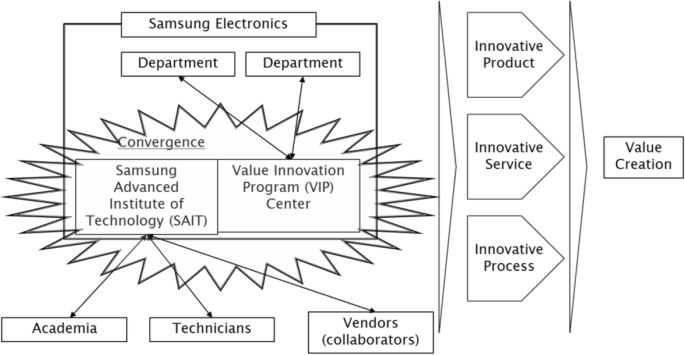
Co-innovation at Samsung Electronics. Based on the information from SAIT ( www.SAIT.samsung.com ) and Kim’s [ 35 ] study
SAIT has played a significant role in connecting SE with external entities ( http://www.sait.samsung.co.kr ), such as universities, through the Global Research Outreach (GRO) program and other collaborators via the Collaborative Open Research Expert (CORE) program. These efforts have allowed the firm to share the risks inherent in planting innovation. Thus, the firm has been able to reduce the uncertainty involved in innovative practices and maximize its value with finite organizational resources.
Another example of collaboration lies in its value-chain management beyond the use of external capabilities. An association of Samsung’s collaborating vendors, Hyup-Sung-Hoe, has played a key role in co-innovation processes [ 46 ]. SE and collaborating vendors have participated in innovation activities, including sectional committee meetings. It is evident that SE’s innovation activities cover not only its own value chain but also that of its partners. Given the fact that current business activities must include vendors, the improvement of innovation capabilities of the entire value chain is essential for gaining competitive advantage. SE also considers the creation of new ventures with excellent technologies as another outcome of its open innovation strategy [ 47 ]. The firm manages its entire value chain to compete successfully, as opposed to conducting business with partners for short-term monetary rewards. Figure 1 presents SE’s value chain convergence activities.
SE has participated in the various industry-academia collaboration projects. This partnership has enabled SE to interact with partners to utilize their tangible and intangible resources. Particularly, research universities can provide professional human resources, research expertise, and infrastructure. In 2012, SE established the Centre for Intelligent Computing (CIC) with Seoul National University [ 48 ]. While the former supports the facilities and programs, the latter provides research ideas and its faculty resource. Such projects allow SE to benefit from the results of collaborative innovation while sharing the burden of investment. Furthermore, individual participants would likely to share ideas and opinions due to their “relationships” even after the official project is completed, beyond organizational boundaries. SE has also established the Samsung Talent Program (STP) with 14 Korean universities [ 48 ]. This program is intended to nurture and develop R&D employees to fit its needs.
The use of a co-innovation mechanism has played a key role in managing planting and harvesting innovation with limited organizational resources. SE has established networks with the various innovation partners, including diverse internal departments, academia, technicians, customers, and suppliers to collaborate and co-create for shared goals. In addition to external resources, the closely interconnected relationships among participants are expected to nurture collective intelligence. Overall, co-innovation allows SE to manage both types of innovation, harvesting and planting, while coping with its fast expanding global presence.
Firm performance
The innovation investment of Samsung Electronics has shown tremendous financial return as can be seen in Fig. 2 . The financial information from Daum ( www.daum.net ), a major portal site in Korea, exhibits that SE’s sales volume has dramatically increased since the early 2000s. As SE has paid more attention to harvesting innovation, its sales volume surged from 2001 to 2004. This implies that the firm continued its growth by actively pursuing innovative activities which created much financial gain in the short term.
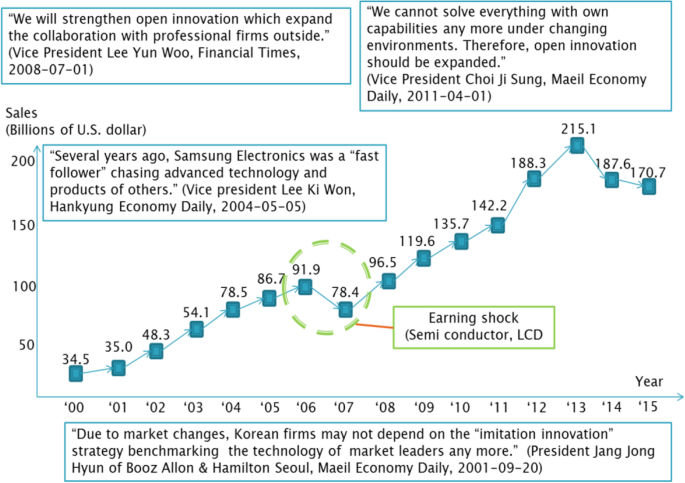
Annual revenue of Samsung Electronics. Based on the financial information from Daum ( www.daum.net ) and Hoovers ( www.hoovers.com ) and news articles from Naver ( www.naver.com )
The revenue of the firm diminished drastically in 2007 with the global financial crisis. This “earning shock” was due to the decrease of demands for LCDs and semiconductors [ 49 ]. The global economy was in recession for several years afterward. For example, in 2012, the Federal Reserve Bank announced that the net asset of median family in the USA decreased by 38.8% from December 2007 to June 2009 [ 50 ]. Given that the consumption of middle-class families in the USA has been the locomotive of global economy for decades, the effect of the macro-economic crisis would be challenging for many global firms.
SE executives began to search solutions for the creation of original technologies, while continuing its innovation harvesting efforts. Despite the global financial crisis, SE has continued its growth [ 50 ]. In 2017, the revenue was approximately $224 billion [ 51 ]. SE has steadily expanded its business after it introduced harvesting and planting innovation despite the hostile macro-economic environment and recent ownership succession.
Discussion and evaluation
This study investigated planting and harvesting innovation to answer the research question, “Which classification of innovation best explains the heterogeneous timing of revenue realization?” While harvesting innovation seeks commercial results in a relatively short term, planting innovation pursues the development of new ideas and technologies for a long term. For instance, a firm with the CDMA wireless technology may not succeed financially without the dispersion of CDMA phones. Given the finite amount of resources, firms need to efficiently balance planting and harvesting innovation. Otherwise, they would fail to develop both new products/services for market launching and original technologies for future market expansion while continuing their business activities.
A case analysis was employed to answer the second research question, “How are planting and harvesting activities of innovation implemented in a successful global business firm?” Samsung Electronics (SE) was chosen as a case study since it has become the largest electronics firm in the world but originated from a former emerging economy, South Korea. Despite its limitations, SE continued to grow by using innovation as a vehicle to move from an outsourcing firm to a global leader in innovation. It is a dramatic success story for a local firm in Korea which began its business in the 1970s. Since SE established innovation as the core of its business activities in its mission statement, it has implemented the dual strategy of planting and harvesting innovation.
SE has participated in various activities to develop innovative new technologies as well as products. The interviews reported were collected from news articles to analyze the stream of innovative activities of SE. Harvesting innovation has led to the initiation of a broad range of new products, allowing the firm to access global customers and also received world-renowned innovation awards. SE has also focused on planting innovation which can result in original technologies. Based on Blue Ocean Strategy, the Value Innovation Program (VIP) Centre has been primarily responsible for developing new products. The Samsung Advanced Institute of Technology (SAIT) pursues original technologies which can continuously support technological leadership in the years to come.
Co-innovation [ 1 ] has enabled SE to focus both planting and harvesting innovation activities with limited resources. External collaborators have contributed to the application of SE’s tacit knowledge for convergence that is difficult to imitate by competitors. The VIP Centre and SAIT have played a critical role in encouraging collaboration among innovation value chain partners, including academic researchers, technicians, vendors, and customers to co-create value. It has enabled the firm to pursue innovative outcomes while managing financial stability. The financial performance of SE exhibits that its innovation activities have resulted in a remarkable success.
Conclusions
The digital age is characterized by the increased complexity and uncertainty of the business environment [ 1 ]. In the environment of increasing velocity of change, business firms must develop dynamic capabilities through innovation to adapt to change with agility, flexibility, and speed [ 4 ]. There have been various innovation approaches in the literature: exploitative vs. explorative [ 7 ], disruptive [ 52 ] vs. non-disruptive [ 53 ], ambidexterity [ 54 ], and convergence innovation [ 55 ]. However, the purpose of innovation remains the same, which is to create new or added value by applying ideas or technologies in a fundamentally different way [ 1 ]. What is not widely known is that innovation is not one integrated process. Instead, there are several steps and cycles in innovation. Planting innovation involves creating new ideas, scientific breakthroughs, or new technologies. Planting seeds does not guarantee a good harvest. Many nurturing steps such as careful planning, risk taking, and entrepreneurship are needed to have a successful harvest. Thus, studying the most spectacular success transformation case of SE through its innovation process provides meaningful theoretical and practical insights and a contribution to the literature of innovation.
This study is not free from limitations. Although SE can be considered as one of global leading innovators originated from Korea, a success story from one of the poorest countries in the world to an advanced economy, the generalizability of the single case study can be limited as Tversky and Kahneman [ 56 ] suggested. Future researchers should conduct relevant studies in various contexts to overcome such limitation. In addition, the qualitative analysis tool of Gibbert et al. [ 57 ] can be used to lessen the concern on generalizability.
There are many factors that have contributed to the success of SE. In this study, we used the revenue as the reference of SE’s efforts of harvesting innovation. There could be many other factors that contributed to the performance of SE. However, we believe these factors all contributed to the combined efforts of SE in harvesting innovation.
In addition, it is also expected that future studies may apply more refined research methods to examine the process and consequences of planting and harvesting innovation. While we believe in the merits of the research method applied in this study, it is also possible that executives might have exaggerated the process and outcomes of their projects. Future researchers are expected to cross-check the results of planting and harvesting innovation by utilizing multiple research methods.
Despite the limitations, this research provides several meaningful implications. It uses a distinction of planting and harvesting innovation [ 8 , 9 ] to examine how a firm grows into a global leader despite its finite managerial and financial resources. While planting innovation aims to implement technological advancement as a potential source of long-term profits, harvesting innovation focuses on the development of new products for market expansion in the short term. The framework of planting and harvesting innovation is expected to provide a tool for managers to distribute limited funds for various types of innovation projects. It shall enable them to clarify whether the current focus of innovation investment lies in launching new innovative products or seeking competitive advantage for future profits. The case of Samsung Electronics exhibited that its innovation has focused on both short-term profits and technological innovation for the future growth momentum. Firms are recommended to follow this notion to compete successfully in high tech industries with limited financial, technological, and managerial competencies.
Collaboration is also required for firms seeking both planting and harvesting innovation. Given their shortage of resources and competencies, firms need to share the risks and the burdens of innovation projects with external partners. Following the case of Samsung, they are expected to cooperate with various entities, including research institutions, suppliers, customers, or new ventures. It enables firms to afford the cost of breakthrough innovation despite their finite resources and experiences. Collaboration helps these firms create innovation results for advanced as well as emerging economies.
This study also provides implications from methodological perspectives (Table 2 ). The use of indirect interviews from news articles allowed us to observe the opinions of SE executives over time. In addition, it can collect the opinions of executives at the time of innovative activities rather than asking current employees’ perceptions about what happened in the past. It provides future researchers with an effective method for exploratory research. The use of this underused but promising methodology can contribute to overcoming the limitations of research in the management field despite its possible limitations.
Practitioners can obtain lessons from the results of this study. They could observe how SE, a former emerging market firm, dispersed investment risks by collaborating with the various stakeholders to implement planting innovation. The convergence of internal and external ideas, from suppliers, academia, other businesses, and customers, is essential for the implementation of both types of innovation with finite resources. Furthermore, they need to nurture innovative capabilities of entire internal and external stakeholders as co-innovators. This shall allow firms to achieve the network effect of innovation.
As suggested by Lee [ 4 ], the main focus of innovation projects has been on how to benefit business activities in new ways. Lee [ 58 ] and Schniederjans and Schniederjans [ 59 ] also examined how practical operational issues like quality practices can be improved by innovation.
Availability of data and materials
The datasets used and/or analyzed during the current study are available from the corresponding author on reasonable request.
Abbreviations
Blue Ocean Strategy
Consumer Electronics Association
Cross-functional team
Centre for Intelligent Computing
Collaborative Open Research Expert
Global Research Outreach
Palo Alto Research Center
Point of care testing
Samsung Advanced Institute of Technology
Code-Division Multiple Access
Samsung Talent Program
Value Innovation Program
Lee SM, Lim SB (2018) Living innovation: from value creation to the greater good. Emerald Publishing, Bingley, U.K
Book Google Scholar
Chesbrough H (2003) Open innovation: the new imperative for creating and profiting from technology. Harvard Business School Publishing, Boston, MA
Google Scholar
Damanpour F, Walker RM, Avellaneda CN (2009) Combinative effects of innovation types and organizational performance: a longitudinal study of service organizations. J Manage Stud 46(4):650–675
Article Google Scholar
Lee SM (2018) Innovation: from small “i” to large “I”. Int J Quality Inno. 4(1). https://doi.org/10.1186/s40887-018-0022-4
Lawson B, Samson D (2001) Developing innovation capability in organizations: a dynamic capabilities approach. Int J Innov Manage 5(3):377–400
He Z-L, Wong P-K (2004) Exploration vs. exploitation: an empirical test of the ambidexterity hypothesis. Organ Sci 15(4):481–494
March J (1991) Exploration and exploitation in organizational learning. Organ Sci 2(1):71–87
Jang S H (2012) Ownership structure, absorptive capacity, and innovation: planting vs harvesting innovation (doctoral dissertation). Retrieved from http://digitalcommons.unl.edu/businessdiss/29/
Jang SH, Grandzol C (2014) Value co-creation in emerging economies: planting and harvesting innovation perspectives. Int J Serv Sci 5(3/4):171–181
Teece DJ (2014) The foundation of enterprise performance: dynamic and ordinary capabilities in an (economic) theory of firms. Acad Manage Perspect 28(4):324–338
Gopalakrishnan S, Damanpour F (1997) A review of innovation research in economics, sociology, and technology management. Omega 25(1):15–28
Nohria N, Gulati R (1996) Is slack good or bad for innovation? Acad Manage J 39(5):1245–1264
Johannessen JA, Olsen B, Lumpkin GT (2001) Innovation as newness: what is new, how new, and new to whom? Eur J Innov Manage 4(1):20–31
Damanpour F, Szabat KA, Evan WM (1989) The relationship between types of innovation and organizational performance. J Manage Stud 26(6):587–602
Van de Ven AH (1986) Central problems in the management of innovation. Manage Sci 32(5):590–607
Rogers M (1998) The definition and measurement of innovation. Working Paper. Melbourne Institute of Applied Economic and Social Research, Melbourne, Australia
Rosenbusch N, Brinckmann J, Bausch A (2011) Is innovation always beneficial? A meta-analysis of the relationship between innovation and performance in SMEs. J Bus Venturing 26(4):441–457
Stieglitz N, Heine K (2007) Innovations and the role of complementarities in a strategic theory of the firm. Strateg Manage J 28(1):1–15
Teece D (1986) Profiting from technological innovation: implications for integration, collaboration, licensing and public policy. Res Policy 15(6):285–305
Dewar R, Dutton J (1986) The adoption of radical and incremental innovations: an empirical analysis. Manage Sci 32(11):1422–1433
Gumusluoglu L, Ilsev A (2009) Transformational leadership, creativity, and organizational innovation. J Bus Res 62(4):461–473
Halme DG, Kessler DA (2006) FDA regulation of stem-cell based therapies. New Engl J Med 355(16):1730–1735
Schmookler J (1966) Invention and economic growth. Harvard Business School Press, Cambridge, MA
Chesbrough H, Rosenbloom RS (2002) The role of business model in capturing value from innovation: wvidence from Xerox Corporation’s technology spin-off companies. Ind Corp Change 11(3):529–555
Simsek Z (2009) Organizational ambidexterity: towards a multilevel understanding. J Manage Stud 46(4):597–624
Lee SM, Olson DL, Trimi S (2010) The impact of convergence on organizational innovation. Organ Dyn 39(3):218–225
Park Y, Lee JY, Hong S (2011) Effects of international entry-order strategies on foreign subsidiary exit. Manage Decis 49(9):1471–1488
Song D (2004a) Open the era of value innovation: (3) the case of Samsung Electronics. Hankyung Business Daily (April 19) Retrieved from http://news.naver.com/main/read.nhn?mode=LSD&mid=sec&sid1=101&oid=015&aid=0000701971
Hwang I (2001) No future for Korean firms: (1) technology imitation. Maeil Business Newspaper, September, 20 Retrieved from http://news.naver.com/main/read.nhn?mode=LSD&mid=sec&sid1=101&oid=009&aid=0000151003
Lee T (2005) [Searching blue ocean] Large firms: Samsung Electronics, be a consumer. Hankyung Business Daily, October 10 Retrieved from http://www.hankyung.com/news/app/newsview.php?aid=2005100701291
Lee T (2006) Korea innovation forum 2006: Samsung electronics VIP centre. Hankyung Business Daily, February 14 Retrieved from http://news.naver.com/main/read.nhn?mode=LSD&mid=sec&sid1=101&oid=015&aid=0000872791
Kim W, Maugborne W (2005) Blue ocean strategy: how to create uncontested market space and make the competition irrelevant. Harvard Business School Press, Boston, MA
Song D (2004b) Open the era of value innovation: (5) VI from executives. Hankyung Business Daily, May 5 Retrieved from http://news.naver.com/main/read.nhn?mode=LSD&mid=sec&sid1=101&oid=015&aid=0000706660
Song D (2005) Toward the blue ocean: an interview with Lee Dong Jin, a VIP centre Vice President at Samsung Electronics. Hankyung Business Daily, November 8 Retrieved from http://news.naver.com/main/read.nhn?mode=LSD&mid=sec&sid1=101&oid=015&aid=0000848475
Kim M (2004) The era of value innovation: (4) VI embedded in Samsung. Hankyung Business Daily, May 4 Retrieved from http://news.naver.com/main/read.nhn?mode=LSD&mid=sec&sid1=101&oid=015&aid=0000706224
Kim Y (2007) Samsung value innovation program (VIP) centre. Financial News, November 4 Retrieved from http://news.naver.com/main/read.nhn?mode=LSD&mid=sec&sid1=101&oid=014&aid=0000355858
Yang H (2008) Samsung Electronics Vice President Lee Yun Woo: initiate future core technologies. Financial News, July 1 Retrieved from http://www.fnnews.com/news/200807011810110422?t=y
Chesbrough H (2012) Open innovation: where we’ve been and where we’re going. Res Techno Manage 55(4):20–27
Lee D (2011) Samsung Electronics Vice President Choi Jisung: respond early to even natural disasters. Daily Maekyung, April 1 Retrieved from http://news.naver.com/main/read.nhn?mode=LSD&mid=sec&sid1=101&oid=009&aid=0002439029
Jin S (2009) Samsung takes over Polish Amica. Moneytoday December 22 Retrieved from http://news.naver.com/main/read.nhn?mode=LSD&mid=sec&sid1=101&oid=008&aid=0002254573
Kim B (2008) Samsung Electronics announces proposal for combination with SanDisk in letter to board of directors. Moneytoday, September 17 Retrieved from https://news.naver.com/main/read.nhn?mode=LSD&mid=sec&sid1=101&oid=008&aid=0002034388
Yonhap (2011) AsiaNet: Samsung Electronics and IBM announce patent cross-license agreement. February 9 Retrieved from https://news.naver.com/main/read.nhn?mode=LSD&mid=sec&sid1=104&oid=001&aid=0004904103
Barrett ME (2000) Time marches on: the worldwide watch industry. Thunderbird Int Bus Rev 42(3):349–372
Lynn LH (1998) The commercialization of the transistor radio in Japan: the functioning of an innovation community. IEEE T Eng Manage 45(3):220–229
Dyer JH, Singh H (1998) Relational view: cooperative strategy and sources of interorganizational competitive advantage. Acad Manage Rev 23(4):660–679
Kim C (2009a) Collaborating vendors benefit from Samsung Electronics. Maekyung Economy, August 23 Retrieved from http://news.naver.com/main/read.nhn?mode=LSD&mid=sec&sid1=101&oid=024&aid=0000026894
Kim M (2009b) Samsung embraces ventures. Munhwailbo, November 4 Retrieved from https://news.naver.com/main/read.nhn?mode=LSD&mid=sec&sid1=101&oid=021&aid=0002013900
Park Y (2012) Industry-academia collaboration, ‘upgrade.’ Economic Review. In: March 9 Retrieved from http://www.econovill.com/archives/39043
Park S (2007) The bad performance of Samsung Electronics in the first quarter, Why? Sekyeilbo, April 14 Retrieved from http://news.naver.com/main/read.nhn?mode=LSD&mid=sec&sid1=101&oid=022&aid=0000220925
Bae B, Go S (2012) The middle class in Korea and U.S. was demolished as the result of the global financial crisis in 2008. Kukminilbo, June 12 Retrieved from https://news.naver.com/main/read.nhn?mode=LSD&mid=sec&sid1=101&oid=005&aid=0000514948
Hoover’s Company Records (2019) Samsung Electronics Co., Ltd. In-depth Records, January 23 Retrieved from https://advance-lexis-com.proxy-bloomu.klnpa.org/api/document?collection=company-financial&id=urn:contentItem:5H1P-0GF1-JBPR-X276-00000-00&context=1516831
Christensen CM, Rayner M, McDonals R (2015) What is disruptive innovation? Harvard Bus Rev 93(12):44–53
Kim WC, Maubourgne R (2019) Nondisruptive creation: rethinking innovation and growth. MIT Sloan Manage Rev Spring:46–56
O’Reilly CA, Tushman ML (2013) Organizational ambidexterity: the past, present, and future. Acad Manage Perspect 27(4):324–338
Lee SM, Olson D (2010) Convergenomics: strategic innovation in the convergence era. Gower, Surrey, UK
Tversky A, Kahneman D (1986) Rational choice and the framing of decisions. J Bus 59(4):251–278
Gibbert M, Ruigrok W, Wicki B (2008) What passes as a rigorous case study? Strategic Manage J 29(13):1465–1474
Lee D (2015) The effect of operational innovation and QM practices on organizational performance in the healthcare sector. Int J Quality Inno 1(1). https://doi.org/10.1186/s40887-015-0008-4
Schniederjans D, Schniederjans M (2015) Quality management and innovation: new insights on a structural contingency framework. Int J Quality Inno 1(1). https://doi.org/10.1186/s40887-015-0004-8
Download references
There was no funding support for this study.
Author information
Authors and affiliations.
Zeigler College of Business, Bloomsburg University of Pennsylvania, Bloomsburg, USA
Seung Hoon Jang
Department of Management, University of Nebraska-Lincoln, Lincoln, USA
Sang M. Lee
Kania School of Management, University of Scranton, Scranton, USA
School of Air Transport and Logistics, Korea Aerospace University, Goyang, South Korea
Donghyun Choi
You can also search for this author in PubMed Google Scholar
Contributions
All authors contributed to the developing of the manuscript. All authors read and approved the final manuscript.
Corresponding author
Correspondence to Seung Hoon Jang .
Ethics declarations
Competing interests.
The authors declare that they have no competing interests.
Additional information
Publisher’s note.
Springer Nature remains neutral with regard to jurisdictional claims in published maps and institutional affiliations.
Rights and permissions
Open Access This article is distributed under the terms of the Creative Commons Attribution 4.0 International License ( http://creativecommons.org/licenses/by/4.0/ ), which permits unrestricted use, distribution, and reproduction in any medium, provided you give appropriate credit to the original author(s) and the source, provide a link to the Creative Commons license, and indicate if changes were made.
Reprints and permissions
About this article
Cite this article.
Jang, S.H., Lee, S.M., Kim, T. et al. Planting and harvesting innovation - an analysis of Samsung Electronics. Int J Qual Innov 5 , 7 (2019). https://doi.org/10.1186/s40887-019-0032-x
Download citation
Received : 25 April 2019
Accepted : 11 September 2019
Published : 21 October 2019
DOI : https://doi.org/10.1186/s40887-019-0032-x
Share this article
Anyone you share the following link with will be able to read this content:
Sorry, a shareable link is not currently available for this article.
Provided by the Springer Nature SharedIt content-sharing initiative
- Planting innovation
- Harvesting innovation
- Co-innovation
- Multinationals

Samsung Electronics—A Detailed Case Study

Devashish Shrivastava
Samsung is a South Korean electronic gadget manufacturer in Samsung Town, Seoul. Samsung Electronics was established by Lee Byung-Chul in 1938 as an exchanging organization.
We all know this information about Samsung. Don't we? But what we don't know? Do you know how much Samsung has grown in these years? What are the Future Plans of Samsung? How much Samsung invested in its R&D? What difficulties did the company face coming all this way? What is the history behind this multinational conglomerate?
Don't worry we got you covered. We have penned down a detailed Case Study on Samsung Electronics. Let's find out in this thoroughly studied Samsung case study.
Let's start the detailed case study from here.
Samsung entered the electronics industry in the late 1960s and the development and shipbuilding ventures in the mid-1970. Following Lee's demise in 1987, Samsung was divided into five business groups - Samsung Group, Shinsegae Group, CJ Group, Hansol Group and Joongang Group.
Some of the notable Samsung industrial subsidiaries include Samsung Electronics, Samsung Heavy Industries Samsung Engineering, and Samsung C&T (separately the world's 13th and 36th biggest development companies). Other notable subsidiaries include Samsung Life Insurance, Samsung Everland, and Cheil Worldwide.
Samsung has a powerful influence on South Korea's monetary advancement, legislative issues, media, and culture. Samsung has played a significant role behind the "Miracle on the Han River". Its subsidiary organizations produce around a fifth of South Korea's complete exports. Samsung's revenue was equivalent to 17% of South Korea's $1,082 billion GDP.
History of Samsung Electronics Samsung's Business Strategy Samsung Rides High In India Business Growth in India Future Plans of Samsung FAQ's
History of Samsung Electronics

1938 (Inception of Samsung)-
- In 1938, Lee Byung-Chul (1910–1987) of a huge landowning family in the Uiryeong region moved to nearby city Daegu and established Samsung Sanghoe.
- Samsung began as a little exchanging organization with forty representatives situated in Su-dong. It managed dried fish, privately developed staple goods and noodles. The organization succeeded and Lee moved its head office to Seoul in 1947.
- When the Korean War broke out, Lee had to leave Seoul. He began a sugar processing plant in Busan named Cheil Jedang. In 1954, Lee founded Cheil Mojik. It was the biggest woollen factory in the country.
- Samsung broadened into a wide range of territories. Lee wanted to build Samsung as a pioneer in a wide scope of enterprises.
- In 1947, Cho Hong-Jai, the Hyosung gathering's organizer, put resources into another organization called Samsung Mulsan Gongsa or the Samsung Trading Corporation with Samsung's founder Lee Byung-Chul. The exchanging firm developed into the present-day Samsung C&T Corporation .
- After few years in business, Cho and Lee got separated due to the differences in the management style. In 1980, Samsung acquired the Gumi-based Hanguk Jeonja Tongsin and entered the telecommunications market . During the initial days, it sold switchboards.
1987 (Demise of Lee Byung-Chul)-
- After Lee's demise in 1987, the Samsung Group was divided into four business gatherings—Samsung Group, Shinsegae Group, CJ Group, and the Hansol Group.
- One Hansol Group agent stated, "Just individuals uninformed of the laws overseeing the business world could think something so ridiculous," while also adding, "When Hansol got separated from the Samsung Group in 1991, it cut off all installment assurances and offer holding ties with Samsung subsidiaries."
- One Hansol Group source attested, "Hansol, Shinsegae, and CJ have been under autonomous administration since their particular divisions from the Samsung Group."
- One Shinsegae retail chain official executive stated, "Shinsegae has no installment certifications related to the Samsung Group." In 1982, it constructed a TV get-together plant in Portugal, a plant in New York in 1984, a plant in Tokyo in 1985 and an office in England in 1996.
2000 (Samsung in 20th Century)
- In 2000, Samsung opened a development center in Warsaw, Poland. It started with set-top-box technology before moving to TV and cell phones. The cell phone stage was created with accomplices and formally propelled with the first Samsung Solstice line of gadgets and different subordinates in 2008. It later emerged into the Samsung Galaxy line of gadgets that is Notes, Edge, and other models.
- In 2010, Samsung declared a ten-year development system based on five businesses. One of these organizations was to be centered around bio-pharmaceuticals in which ₩2,100 billion was invested.
- In the first quarter of 2012, Samsung Electronics turned into the world's biggest cell phone creator by unit deals, surpassing Nokia which had been the market chief since 1998.
- In 2015, Samsung was granted U.S. patents as compared to other organizations like IBM , Google , Sony, Microsoft , and Apple. Samsung got 7,679 utility licenses before 11 December 2015.
- On 2 August 2016, Samsung Electronics revealed the Galaxy Note7 smartphone, which went on sale on 19 August 2016. At the beginning of September 2016, it halted its selling of smartphones due to some problems with the smartphones. Samsung suspended the selling of the smartphones and recalled its units for inspection.
- This happened after certain units of the telephones had batteries with a deformity that made them produce extreme warmth, prompting flames and blasts. Samsung replaced the reviewed units of the telephones with a new version. It was later found that the new version of the Galaxy Note 7 also had the same battery deformity.
- Samsung recalled all Galaxy Note7 cell phones worldwide on 10 October 2016 and permanently ended its production on the same day.
Samsung's Business Strategy

Great business strategies have been applied by Samsung over the years. Not very far back, Samsung wasn't as famous as now. Samsung has now advanced so much that it is the principal contender of Apple Inc. Samsung is the biggest tech business by income and the seventh most significant brand today. The showcasing procedure it applied encouraged Samsung electronics to turn into an industry driving innovation organization.
The Samsung marketing strategy was one of the best systems at any point because it helped a cost-driven organization to change its structure and become a power producer. Due to the consistently changing tastes of purchasers in the innovation business, organizations needed to pursue the pace and offer dynamic and advancing devices to their clients. In this way, Samsung additionally needed to change to pick up the high ground available, and the new Samsung showcasing methodology was the way to advancement.
Some of the business strategies of Samsung Electronics are listed below:
Promotional Mix Of Samsung
Samsung has arrived at fantastic statures with its cell phones which helped the brand to turn into an image of value and unwavering quality for its purchasers.
Samsung Marketing Mix Pricing Strategy and Samsung Advertising Methodology are the two estimating techniques used by the organization. Other than its items, Samsung is celebrated for its customer support . However, item variety is the most dominant part of the promoting blend of Samsung.
- Skimming Price
Like Apple , Samsung uses skimming costs to pick up the high ground over its rivals. For example, Galaxy S6 and S6 Edge are the brand's new results of Samsung conveying the trademark "Next is Now" and guaranteeing that they are the best smartphone maker at any point made.
What will happen when different contenders will dispatch a cell phone with indistinguishable highlights? Straightforward. Samsung will bring down the cost and effectively steal the customers from its competitors.
- Focused Pricing
Samsung experiences issues in increasing an edge over its rivals with different items. Doubtlessly, Samsung is a credible brand. However, regarding home appliances, it can't be in any way, shape, or form outperform LG In the cameras segment and other home appliance units. Also, Samsung cannot compete with Canon and Nikon.
For Samsung to withstand this savage challenge, it's crucial to utilize aggressive valuing of its products. Moreover, Samsung is neither a newbie underway nor non-inventive. For the most part, it is often the first company to be innovative with its products and present a change among its competitors.
- Putting in Samsung Marketing Strategy
Samsung uses divert advertising strategies. Retailers who present the innovation chain will undoubtedly incorporate Samsung in their rundown on account of the firm being a world-celebrated brand. Samsung can likewise fill in as an option for the purchasers. The circulation is a convincing piece of the Samsung promoting methodology.
In specific urban communities, Samsung has an agreement with a solitary dissemination organization that circulates the items all through the city. For example, Mumbai is an incredible case where Samsung conveys its products through a solitary organization.
Samsung Rides High In India

The greatest leader by far in the smartphone business is Samsung Electronics, the world's greatest cell phone and TV producer.
Samsung is India's greatest, versatile brand. It is the developer of Reliance Jio's 4G LTE system — the greatest and busiest information system on the planet.
Discernments, advertise wars, openings, rivalry — now and then from conventional remote adversaries, from nearby upstarts, and emerging Chinese brands trouble Samsung.
Be that as it may, every time Samsung has had the option to fight off the dangers and hold its ground. It has been leading the market in the TV fragment for more than 12 years and in the versatile business for a long time after it toppled Nokia in 2012.
Riding The Smartphone Wave
As indicated by some statistical surveying firms following cell phone shipments, Chinese firm Xiaomi is creeping nearer — or has even surpassed Samsung after December 2017 quarter.
While for the entire year 2017, Samsung was No. 1 in the cell phone space, IDC information indicated Xiaomi drove the last quarter with 26.8% piece of the overall industry. Samsung was at 24.2%. Different players, for example, Vivo, Lenovo, and Oppo stayed at 6.5, 5.6, and 4.9%, separately.
Warsi, who has been working with Samsung for as far back as 12 years and has as of late been advanced as Global Vice President, is unflinching, "These difficulties offer us the chance to work more earnestly for our customers and with our accomplices.
Furthermore, shoppers love marks that emphasis on them," he says. "Samsung is India's No. 1 cell phone organization crosswise over sections — premium, mid and reasonable. That is what makes a difference."
Statistical surveying firm GfK tracks disconnected offers of handsets — which make up around 70% of the market — in which Xiaomi is attempting to make advances.
Samsung had a 42% worth piece of the overall industry in the general cell phone showcase in the nation in 2019 and 55% in the superior fragment as indicated by GfK. An industry official who would not like to be named says that India must be Samsung's greatest market by large volumes.
The thought currently is to become the cell phone business which gets more worth. As indicated by reports, Samsung India's incomes from cell phone deals in 2018-19 remained at an astounding INR 34,300 crore. That is over $5.5 billion and development of 27%. Samsung's nearest adversaries are talking about incomes of $1 billion in India, going up to $2 billion.
Samsung is the world's largest manufacturer of consumer electronics by revenue. As of 2019, Samsung Electronics is the world's second-largest technology company by revenue, and its market capitalization stood at US$301.65 billion, the 18th largest in the world.
Shopper Is At The Center

Samsung is a worldwide advancement powerhouse that leads the patterns. It profoundly put resources in India — 22 years of connections in the exchange, and tremendous interests in neighborhood R&D . It has around 10,000 architects working in research offices in India and is perhaps the greatest scout from the IITs.
"Samsung has a solid brand picture in India, as it has been available in various customer electronic portions with quality items for quite a while now. The brand is trusted because of its long history in the nation, dish India nearness, and a vigorous after deals support for buyers," says Shobhit Srivastava, explore expert at Counterpoint Research.
Indeed, even an item fizzle of the size of the Galaxy Note7 in September 2016 couldn't affect Samsung. While the organization was fast enough to get back to every one of the units that had been sold and cease the gadget totally, Samsung's activities and ensuing effective dispatches of leads like Galaxy S8, Note8, the Galaxy S9 and S9+, which were propelled in February, rescued the harm and raised the profile of the brand as a dependable organization. "They rushed to concede their error and that helped them interface with the perceiving clients of today far superior," says Koshy.
Make For India
Samsung's system 'Make for India', which resounds with the administration's ' Make in India ' activity, was conceived in the late spring of 2015. Samsung India's new President and CEO, H.C. Hong, had recently moved in from Latin America and was looked with the prompt tough assignment of fighting a firm challenge from two nearby versatile organizations that is Micromax and Intex.
Samsung's customer hardware business containing TVs, fridges, and other advanced machines were additionally confronting challenges from Sony and LG.
Around a similar time, the legislature of India propelled its 'Make in India' activity. "In this way, Mr. Hong revealed to us we have been doing Make in India effectively for two decades. What we should concentrate on widely to remain on top of things is Make for India (MFI)," says Dipesh Shah, Managing Director of Samsung R&D Institute in Bengaluru, the greatest R&D community for Samsung outside Korea.
Truth be told, the R&D focuses in India contribute intensely to the improvement of worldwide items, for example, Samsung's lead cell phones (Galaxy S9 and S9+). While different organizations focused on propelling their worldwide items in India, Samsung went about rethinking items for the nation at its R&D focuses.
India is significant for Samsung, thinking of the nation as the second biggest cell phone showcase on the planet today, and it is possibly the greatest undiscovered market for some advanced apparatuses. The entrance of iceboxes, clothes washers, microwaves, and forced air systems are appallingly low because of components like the accessibility of continuous power, social conduct, way of life, and earnings.
Business Growth in India

Samsung India crossed the INR 50,000 crore deals achievement in 2017 according to the simply distributed organization filings with the Registrar of Companies (RoC), uniting its situation as the nation's biggest unadulterated play purchaser products MNC. The Korean mammoth's all-out salary, including turnover and other pay, developed by 15.5% to INR 55,511.9 crore in FY 2017 from INR 48,053 crore in the earlier year regardless of Chinese organizations making genuine advances into the Indian cell phone advertise.
Samsung's cell phone business developed deals at 26.7% to INR 34,261 crore, while the home apparatus business developed by 12% to INR 6,395.6 crore. The organization's TV business stayed dormant at INR 4,481.2 crore even though Samsung held the market initiative.
The organization's net benefit developed at a quicker pace of 38% to INR 4,156.2 crore which industry examiners credited to more concentrate on premium models crosswise over cell phones and customer hardware having higher edges.
Samsung, in its filings, said the 'Make for India' activity, through which a large portion of the items was planned and created given the Indian customer's needs, has been an enormous achievement and a major factor behind the development.
All the units at Samsung India improved their gross productivity with the TV business dramatically increasing it and the home machine business nearly trebling it. The cell phone business was the biggest supporter of gross benefit having developed by 44% in FY17 at INR 5,005.9 crore.
Future Plans of Samsung

Samsung has arranged a new venture of around INR 2,500 crore to transform its India tasks into a center for parts business, two senior industry administrators said. The ventures could be increased further, they included. The Korean organization has set up two new parts fabricating substances in India—Samsung Display Co and Samsung SDI India—for the generation of cell phones and batteries.
Independently, Samsung's funding arm—Samsung Venture Investment Corp—has set up activities in India to support new companies in gadgets equipment and programming organizations. The segment organizations will supply items to both Samsung India and other cell phone merchants who as of now source parts from Samsung's abroad tasks.
Samsung sees a big opportunity for segment business considering the administration's push on 'Make in India' where expense on imported cell phone segments and purchaser hardware is going up, the administrators said.
Samsung is likewise pitching to the administration for fare impetuses so it can even fare segments from India. Samsung Display has just marked an update of comprehension with the Uttar Pradesh government for an INR 1,500 crore plant for assembling telephone show to be operational by one year from now April. The plant will come up in Noida, the administrators said.
Samsung SDI India has plans to set up an assembling unit in India for lithium-particle batteries after the organization was drifted a month ago, according to its administrative filings with the Registrar of Companies (RoC).
As per the administrators, Samsung SDI has plans to contribute another INR 900-1,000 crore and will settle the plans after counseling with the Center post general races. These speculations come after it introduced the world's biggest cell phone fabricating unit in India a year ago at an all-out cost of INR 4,915 crore. It is expected to be completed in 2020.
That's all for now. Share your learnings and findings. What did you learn from this article? Which information surprised or amused you the most? Feel free to reach us and share your feedback. We would love to hear from you. Do comment us in the comments section below. Happy Reading.
Who is the owner of Samsung Electronics?
Samsung Group is the owner of Samsung Electronics.
Who is the Founder of Samsung?
Samsung Electronics was established by Lee Byung-Chul (1910–1987) in 1938 as an exchanging organization.
Who is the current CEO of Samsung?
Kim, Ki Nam, Kim, Hyun Suk and Koh, Dong Jin are the current CEO of multinational conglomerate Samsung.
What does Samsung Electronics make?
Samsung Electronics produces smartphones, TV sets, laptops, solid-state drives, digital cinemas screens, etc.
Is Samsung a Chinese company?
Samsung is a South Korean electronic gadget manufacturer in Samsung Town, Seoul.
What is Samsung's strategy?
- Promotional Mix of Samsung
How large is Samsung Electronics?
Samsung is the world's largest manufacturer of consumer electronics by revenue. Samsung Electronics is the world's second-largest technology company by revenue, and its market capitalization stood at US$ 301.65 billion, the 18th largest in the world.
What are the future plans of Samsung Company?
Samsung has arranged a new venture of around INR 2,500 crore to transform its India tasks into a center for parts business, two senior industry administrators said.
Must have tools for startups - Recommended by StartupTalky
- Manage your business smoothly- Google Workspace
National Technology Day: Experts Share Insights on Technology Trends and Innovations
National Technology Day is celebrated on May 11th as an occasion to honor Indian scientists, engineers, and technologists. It's a time to recognise the endless possibilities technology offers and ensure responsible innovation. Nowadays, with AI being the talk of the town, or better to say, the talk of the world,
AI Squared Acquires Multiwoven to Accelerate Delivery of Data and AI Insights into Business Applications
Acquisition of leading open-source reverse ETL (rETL) platform comes on the heels of robust Series A funding round. Mumbai, May 10, 2024: AI Squared , a leading technology provider for integrating information into web-based business applications, announces its acquisition of the world’s number one open-source Reverse ETL (rETL) company, Multiwoven.
Sony Marketing Strategy: An In-depth Analysis of its 7Ps Approach
The Sony Group Corporation is a Japanese global enterprise with its head office in Minato, Tokyo. As a significant player in the technology industry, it is among the biggest producers of consumer and business electronics worldwide and the biggest console maker and publisher of video games. Sony Entertainment Inc., is
Harnessing the Sky: How Atmospheric Water Generation Can Combat Global Water Scarcity
The article has been contributed by Mr. Navkaran Singh Bagga, CEO & Founder, Akvo. In today’s world, water scarcity affects over two billion people globally, posing a severe threat to both human health and economic stability. Innovative solutions are imperative to address this crisis. Akvo's atmospheric water generator (AWG) technology
Samsung Newsroom's videos will no longer be supported on Internet Explorer. Please try a different type of web browser .
- SmartThings
- Milan Design Week
- Custom range
- Content Type
- Press Release
[Editorial] How the E&I Lab Within Samsung Research Is Redefining the Future
The world has changed so much since the beginning of 2020. However, even before the COVID-19 pandemic, Samsung was heading down a path in which its technological leadership was creating great opportunities not only to invent the next generation of devices, but to use technology to make people’s lives better. We were beginning to make progress on redefining the future — a future that looks quite different now than it did when we imagined it in 2019.
With global studios in Seoul, Korea, San Francisco, U.S. and Milan, Italy, the Experience and Insight Lab (E&I Lab) – a new division of Samsung Research , an advanced R&D hub that leads the development of future technologies for Samsung’s consumer product business – was created to help bring that future to fruition.
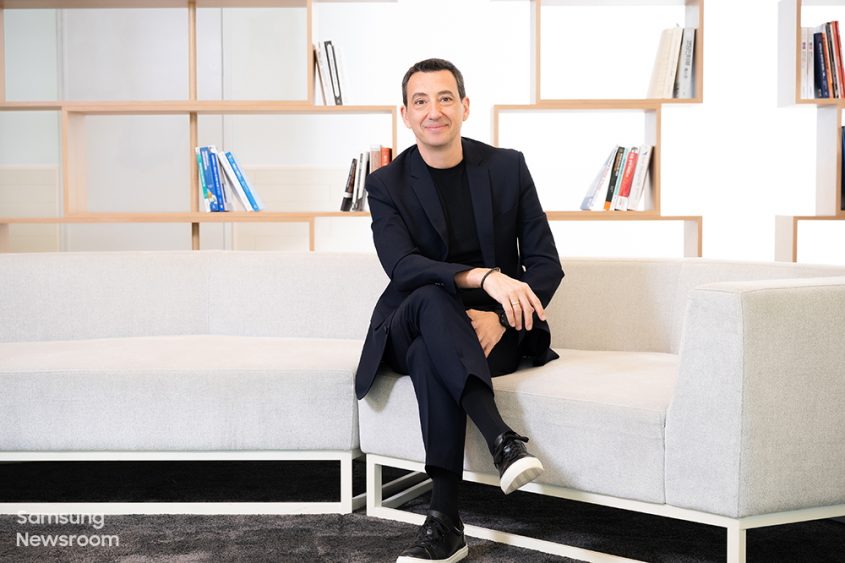
△ Federico Casalegno, Senior Vice President and Head of the Experience and Insight (E&I) Lab
Examining Experiences and Why They Matter
New technologies are offering consumers increasingly more sophisticated experiences, but in some cases they can also overwhelm users with their complexity. This is important to note given that in the near future, it is predicted that we will average more than 20 connected devices per person and almost 40 per household. 1 This is why we must focus on experiences first, rather than products themselves.
I define an experience as the journey customers take with products and solutions, which includes the emotional journey that they take over time. The experiences are not about the technology, which is a component of the experience, but about how customers holistically interact with solutions (including products, services and spaces) over time.
These journeys of holistic interactions are precisely what the E&I Lab has been tasked with exploring. Focusing our efforts on examining those journeys will help ensure that the experiences we develop better serve people’s needs. It will also enable us to make users’ experiences with their products and services both smoother and more satisfying.
Having a meal at home provides a simple way to understand what we mean by experiences in this context. The memories we make while enjoying great food with family and friends can be some of the finest experiences of our lives. We remember our dinner experience and the laughs and warm atmosphere with friends and family, but our memories don’t focus on the app we may have used to pay for the meal, or the devices we used to whip it up. While we can focus on designing the best products, supported by cutting-edge technologies, we need to remember that those products are not the experience in and of themselves; they simply help enable that experience. People don’t just buy products; they buy the experiences that those products enable.
Transaction-centric companies tend to design technologies first and then look for ways to sell them to people. An experience-driven company must be willing to forego creating a new technology, or even abandon one it has created, no matter how impressive it may be, if people don’t need it to enable the desired experiences.
To make this difference between using a technology and enjoying an experience even clearer, I’d like you to consider the step counter on your smartphone or wearable device. From an engineering perspective, we tend to think about step counters in terms of how they work and how accurate they are. To be sure, achieving precision and accuracy are difficult and certainly important. But to users, those factors are in the background; ideally, they are invisible. When we adopt a human-centric design perspective, we consider what counting steps means to users – that is, how the experience adds to their lives beyond simply counting steps. We ask, “What does step-counting technology empower users to do? What kinds of things – tech-related or not – matter to people who count their steps?”
Our approach to design is unique in that it aims to bridge the gap between great technological advances, design, and human needs. Drawing from a deep understanding of people’s lifestyles, our approach places users front and center at the earliest stages of the innovation process. We examine Samsung Research technologies through a user-centric lens, and we use the insights we acquire to develop solutions that streamline users’ lives with meaningful experiences.
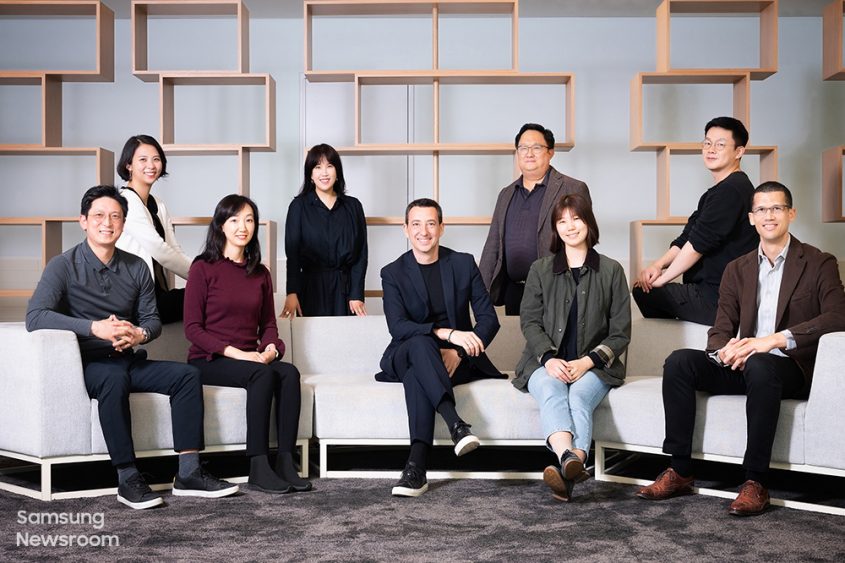
△ Members of Samsung Research’s Experience and Insight (E&I) Lab
Introducing a New Samsung Research Lab
The E&I Lab’s mission is to help the company better understand people’s needs, aspirations and lifestyles in order to craft meaningful experiences through innovative products and cutting-edge technologies. We do this by monitoring emerging trends and cultural shifts, and discovering social and technological changes, and we use these insights to design, prototype, deploy, learn and deliver.
Our goal is to work with and learn from consumers to explore what technologies should do rather than what they could do. We focus on innovation from the perspective of humans and humanity, and we bring that perspective to bear in Samsung Research’s technologies.
The E&I Lab and its multidisciplinary team’s new approach to research and development is centered on creating experiences for people. The “insight” part of our lab’s name refers to how we identify customer needs based on a deep understanding of people’s values, behaviors, and lifestyles, and develop insights so we can design solutions that satisfy those needs.
Factors once considered unrelated to design suddenly become critical when taking a human-centric approach to technological design. These include not just socioeconomic trends and issues, but also multiculturalism, gender inclusion, and a host of other considerations. Central to our concept of design are the beliefs that we must always account for the fact that we live in a complex ecosystem with people of various cultures and views, and that our planet and environment must always be taken into consideration.
The best technology is created based on a deep understanding of why humans need technology in the first place. Our lab seeks to promote a new way of thinking – one based on the idea that people do not adopt products or services based merely on specs or features. For example, people don’t want a camera per se; they may want it because they love storytelling, and they want the experience of capturing and sharing moments that a camera provides.

We recognize that this is a new way of thinking, one that celebrates our passion for great technology while at the same time confronting the reality that technology often turns out to be little more than perfection without purpose. That happens when we fail to put human progress at the very core of our objectives. This kind of progress comes from the synergy between technological advances and human-centric design, which can unlock infinite possibilities in terms of offering people delightful experiences.
We aim to achieve that synergy by leveraging Samsung’s incredible engineering capabilities and what we bring to the table as designers, having adopted this focus on experiences and people’s wants and needs. That synergy will establish Samsung as the leader in an experience-driven world – one that genuinely learns from and works for consumers.

Our Approach
What does the E&I Lab’s human-centric approach to design look like? Once we have a clear idea of the people for whom we are designing and the meaningful experiences that our technologies can enable, we set out to create whatever is called for.
Our work requires rapid prototyping and deploying, which enable us to make an idea tangible. We go beyond the traditional prototyping of things and instead we prototype “problems” – that is, the questions we are trying to answer, or the needs and desires for experiences we are trying to fulfill.
Designers are problem solvers, and good designs begin by first identifying the problems we need to solve. This makes it possible to identify what people genuinely want. Only when we believe we’ve found the problem should we start prototyping and engineering any sort of solution, including a space, an interaction, or even a story. After all, a prototype is all about what a design could be, not necessarily what it should or will be.
In essence, this sort of prototyping requires us to codesign with the people for whom we innovate. It encourages feedback early and often, and it offers us opportunities to learn and improve. Our human-centric approach deliberately breaks the boundaries of established disciplines to escape the confines of technology-driven design. It is multidisciplinary because humanity transcends types, and because the experiences we want to enable are complex and holistic.

It’s Time to Rethink How We Design Experiences
The world has changed. Today, you can’t lead technologically if you aren’t also leading culturally, with purpose and humanity in mind. The E&I Lab’s perspective is based on a belief that a tech company can be considered a leader only if it is human- and humanity-centric.
This has tremendous implications for design, as I’ve attempted to explain here. If the COVID-19 pandemic has shown us anything, it’s that people don’t need better technologies per se, and they certainly don’t need more bells and whistles. They need technologies that help them live better and enable them to achieve their dreams. That is why the E&I Lab wants to redefine experiences in design from a technological standpoint.
Design plays a distinct role in advancing knowledge and creating benefits for humanity. It sparks and complements innovation in the arts, sciences, and technology. Now more than ever, successful designs must be defined by the degree to which they reflect a deeper understanding of humanity’s social and environmental needs.
The E&I Lab breaks boundaries by taking a big-picture view and identifying designs, as opposed to technologies, that the market may be missing. Our process combines problem-solving with critical reflection, and engages with people from the very beginning in order to produce technologies that fulfill their needs and goals rather than our own.
We look forward to harmonizing the E&I Lab’s goals with the work of Samsung engineers around the globe.
1 Brent Heslop, “By 2030, Each Person Will Own 15 Connected Devices – Here’s What That Means for Your Business and Content,” MarTech Advisor, March 4, 2019
TAGS E&I Lab Experience and Insight Lab Samsung R&D Samsung Research
Senior Vice President and Head of the Experience and Insight (E&I) Lab
Insights > Editorials
Corporate > More Stories
Corporate > Technology
- [Editorial] Samsung Envisions a Better Normal in 2021
- Catch Up on All the Exciting Announcements from Samsung’s CES 2021 Press Conference
For any issues related to customer service, please go to Customer Support page for assistance. For media inquiries, please click Media Contact to move to the form.
Get daily updates from Samsung Newsroom
- Media Contact
- SAMSUNG.COM
- Terms of Use
- Privacy and Cookies
Copyright© 2010-2024 SAMSUNG All Rights Reserved.
- People & Culture
- More stories
- TVs & Displays
- Home Appliances
- Network Solutions
- Semiconductors
- More Products
- Citizenship
- Environments
- Sustainability

Online Small Business Courses
Learn Digital Marketing, Sales and Business
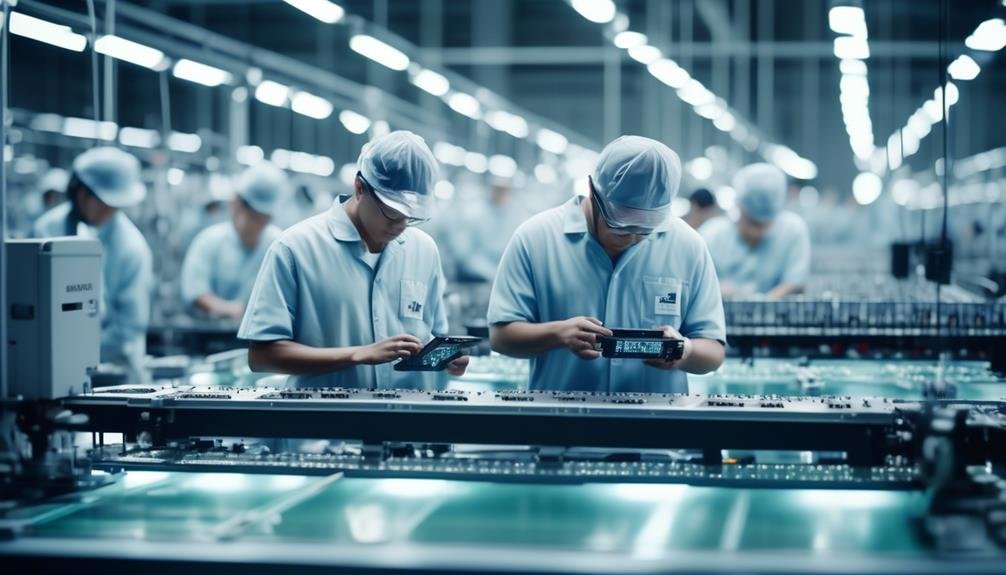
Samsung Electronics: Quality Improvement Case Study
Samsung Electronics, a global leader in consumer electronics, has long been recognized for its commitment to innovation and quality. However, like any industry giant, the company has faced its share of quality improvement challenges.
In this case study, we will explore how Samsung Electronics identified opportunities for quality enhancement, implemented robust quality control measures, and leveraged technology to achieve excellence in their products.
By delving into the strategies and outcomes of their quality improvement initiatives, we can gain valuable insights into the complex world of quality management in the electronics industry and the lessons that can be applied to various business contexts.
Samsung Electronics: A Legacy of Innovation
Samsung Electronics has forged a legacy of innovation through its commitment to continuous technological advancement and groundbreaking product development. The company's journey towards innovation began with its inception, and it has consistently pushed the boundaries of what is possible in the tech industry.
Samsung's relentless pursuit of technological advancement is evident in its diverse range of products, from semiconductors and smartphones to home appliances and beyond. The company has consistently invested in research and development, driving progress in areas such as AI, 5G technology, and IoT. Samsung's ability to anticipate and meet the evolving needs of consumers has solidified its position as a global leader in innovation.
Furthermore, Samsung's legacy of innovation extends beyond product development. The company has actively contributed to shaping industry standards and technological ecosystems, driving progress and fostering collaboration within the tech community. By consistently delivering groundbreaking solutions, Samsung has cemented its reputation as a trailblazer in the global tech landscape.
This commitment to innovation not only sets Samsung apart but also paves the way for future advancements in technology.
Identifying Quality Improvement Opportunities
To identify quality improvement opportunities, Samsung Electronics must first analyze defects in production to pinpoint areas for enhancement.
Additionally, a comprehensive analysis of process efficiency is crucial to identify bottlenecks and inefficiencies.
Furthermore, a detailed examination of customer complaints can reveal valuable insights into areas that require improvement.
Defects in Production
Identifying and addressing defects in the production process is crucial for Samsung Electronics to continually improve the quality of its products. Effective defects management and production optimization are essential for ensuring customer satisfaction and maintaining a competitive edge in the market. The table below outlines key areas for identifying defects and optimizing production processes:
Process Efficiency Analysis
In the context of ensuring high-quality production, an essential aspect involves conducting a comprehensive analysis of process efficiency to identify opportunities for quality improvement. This entails a detailed examination of the manufacturing processes to streamline operations and enhance overall product quality. The analysis focuses on identifying areas for improvement and implementing changes to optimize efficiency and minimize waste.
Key elements of the process efficiency analysis include:
- Value Stream Mapping: Visualizing the production process to identify areas of improvement.
- Root Cause Analysis: Investigating the underlying reasons for inefficiencies or defects.
- Performance Metrics Tracking: Monitoring key performance indicators to assess process effectiveness.
- Standard Operating Procedures Review: Evaluating and updating procedures to ensure efficiency and quality.
- Continuous Improvement Initiatives: Implementing ongoing efforts to enhance processes and drive quality improvements.
This analytical approach enables Samsung Electronics to continuously enhance its operational efficiency and product quality.
Customer Complaints Analysis
Regularly monitoring and analyzing customer complaints is a crucial step in identifying opportunities for quality improvement at Samsung Electronics. By effectively addressing customer dissatisfaction, Samsung can enhance customer satisfaction and loyalty. The table below illustrates an example of a customer complaints analysis, outlining the types of complaints and their root causes.
Analyzing customer complaints allows Samsung to pinpoint areas for improvement, such as streamlining manufacturing processes, optimizing service operations, and enhancing product development. This approach is essential for maintaining high-quality standards and continuously improving customer satisfaction. Identifying and addressing the root causes of complaints can lead to sustained quality enhancement and increased customer loyalty.
Implementing Robust Quality Control Measures
As Samsung Electronics aims to fortify its quality control measures, the focus will be on implementing process improvement strategies to enhance product quality and reliability.
This will involve the meticulous integration of robust quality control processes throughout the production cycle, ensuring that performance metrics are continuously tracked and analyzed to identify areas for improvement.
Ultimately, the goal is to establish a comprehensive framework that safeguards product quality and customer satisfaction.
Process Improvement Strategies
Implementing robust quality control measures is a critical component of Samsung Electronics' process improvement strategies, ensuring the consistent delivery of high-quality products to customers.
To achieve this, the company employs the following strategies:
- Continuous Improvement : Samsung Electronics focuses on constantly refining its processes to enhance product quality and customer satisfaction.
- Quality Assurance : The company utilizes stringent quality assurance protocols to detect and rectify any deviations from established quality standards.
- Data-Driven Approaches : Samsung Electronics leverages data analytics to identify trends and potential areas for improvement within its manufacturing processes.
- Employee Involvement : The company encourages active participation from employees at all levels to contribute ideas for process enhancement and quality control.
- Supplier Collaboration : Samsung Electronics collaborates closely with its suppliers to ensure the quality of incoming components, thereby maintaining high standards throughout the production process.
Quality Control Implementation
Employing a comprehensive framework of stringent quality control measures, Samsung Electronics ensures the consistent delivery of high-quality products to its discerning customer base.
The company has implemented a multifaceted approach to quality control, encompassing thorough testing at every stage of production, stringent adherence to industry standards, and a robust feedback mechanism from customers and market data.
Samsung Electronics emphasizes continuous improvement in quality control through the use of advanced technologies, such as automated inspection systems and machine learning algorithms to detect and address potential defects proactively.
Furthermore, the company has established a culture of quality consciousness among its employees, ensuring that every individual is committed to upholding the highest standards.
Performance Metrics Tracking
A meticulous tracking of performance metrics is essential for ensuring the efficacy and success of robust quality control measures within Samsung Electronics. To achieve this, the company utilizes a comprehensive approach to performance metrics tracking, encompassing various key aspects:
- Quality Control: Samsung Electronics focuses on tracking quality control metrics such as defect rates, customer complaints, and product returns to identify areas for improvement.
- Productivity Tracking: The company also diligently tracks productivity metrics, including production yield, cycle times, and equipment downtime, to optimize operational efficiency.
- Data Analysis: Utilizing advanced data analysis tools, Samsung Electronics examines performance metrics to identify trends, root causes of issues, and opportunities for enhancing product quality and productivity.
- Continuous Improvement: The company emphasizes the continuous monitoring and tracking of performance metrics to drive ongoing quality improvements and operational enhancements.
- Benchmarking: Samsung Electronics employs benchmarking techniques to compare performance metrics against industry standards and best practices, facilitating a proactive approach to quality control and productivity tracking.
Overcoming Quality Improvement Challenges
Samsung Electronics faced significant hurdles in overcoming quality improvement challenges, requiring a comprehensive and strategic approach to drive meaningful change.
One of the primary challenges was integrating quality control measures across diverse product lines and manufacturing processes. Samsung addressed this by implementing a unified quality management system that standardized quality control protocols, enabling the company to consistently monitor and improve product quality.
Additionally, risk management posed a significant challenge due to the global scale of Samsung's operations. To mitigate this, Samsung developed a robust risk assessment framework that identified potential quality risks at various stages of production and supply chain, allowing for proactive intervention to prevent quality issues.
Another obstacle was fostering a quality-centric culture across all organizational levels. Samsung tackled this by instituting extensive training programs and incentivizing employees to prioritize quality. Furthermore, the company established clear quality improvement goals and regularly communicated progress to drive accountability and motivation.
Leveraging Technology for Quality Enhancement
Leveraging advanced technological solutions has become imperative for achieving significant enhancements in product quality across diverse industry sectors. For Samsung Electronics, technology integration and quality assurance techniques have played a pivotal role in driving continuous quality improvement.
The following approaches highlight how leveraging technology has led to quality enhancement at Samsung Electronics:
- Implementation of advanced data analytics tools for real-time quality monitoring
- Integration of Internet of Things (IoT) for predictive maintenance and quality control
- Utilization of artificial intelligence (AI) for automated quality inspection and defect detection
- Adoption of virtual reality (VR) for immersive quality testing and training simulations
- Deployment of blockchain technology for transparent supply chain management and quality tracking
Monitoring and Evaluating Quality Performance
The implementation of advanced data analytics tools, integration of Internet of Things (IoT), and utilization of artificial intelligence (AI) have significantly influenced the monitoring and evaluating of quality performance at Samsung Electronics. Quality measurement at Samsung Electronics involves the continuous collection and analysis of data from various sources, such as production processes, customer feedback, and supply chain operations. This data is then used to assess the performance of products and processes in real-time, enabling prompt corrective actions when deviations from quality standards are identified.
Continuous improvement is a key focus in Samsung Electronics' quality monitoring and evaluation processes. Through the use of advanced analytics, the company is able to identify trends, patterns, and potential areas for improvement. Furthermore, AI algorithms are employed to predict and prevent quality issues before they occur, contributing to proactive quality management.
The integration of IoT allows for real-time monitoring of equipment and processes, providing valuable insights into the production environment. This comprehensive approach to quality performance monitoring and evaluation enables Samsung Electronics to consistently enhance the quality of its products and processes, thus maintaining its position as a leader in the electronics industry.
Achieving Excellence: Quality Improvement Outcomes
Consistently delivering high-quality products and processes is the ultimate goal of Samsung Electronics' commitment to continuous improvement and proactive quality management. The company has implemented various quality improvement strategies and continuous improvement initiatives to achieve excellence in its outcomes.
Some of the key outcomes of these efforts include:
- Enhanced Product Quality : Through rigorous quality control measures and continuous monitoring, Samsung Electronics has significantly improved the overall quality of its products, leading to higher customer satisfaction and loyalty.
- Streamlined Processes : The implementation of lean manufacturing principles and process optimization techniques has resulted in streamlined operations, reduced waste, and improved efficiency across the organization.
- Improved Supplier Relationships : Samsung Electronics has focused on building strong partnerships with its suppliers, fostering collaboration, and ensuring that high-quality standards are maintained throughout the supply chain.
- Enhanced Employee Engagement : By promoting a culture of continuous improvement and providing employees with the necessary training and resources, Samsung Electronics has seen increased employee engagement and contribution to quality enhancement efforts.
- Market Leadership : As a result of its relentless pursuit of quality excellence, Samsung Electronics has solidified its position as a market leader, setting industry benchmarks for quality standards and innovation.
Through robust quality control measures, Samsung Electronics has been able to achieve excellence in quality improvement.
By leveraging technology and continuously monitoring and evaluating quality performance, the company has established a legacy of innovation in the industry.
Like a master craftsman refining a diamond, Samsung has honed its quality improvement processes to achieve brilliance in its products, setting a standard for others to follow.
Similar Posts

Starbucks Coffee Company: A Transformation Case Study
The evolution of Starbucks Coffee Company from a small, local coffee shop to a global powerhouse is a captivating case study that delves into the intricacies of organizational transformation. The company's journey is marked by pivotal moments that have shaped its identity, strategies, and market presence. From a change in leadership to a strategic shift…
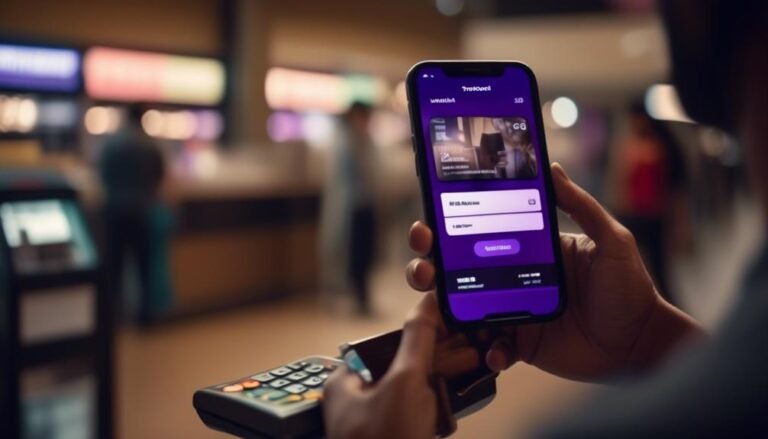
PhonePe: Revolutionizing Payments Case Study
In the ever-evolving landscape of digital payments, PhonePe has emerged as a significant player, reshaping the way financial transactions are conducted in India. The case study delves into the key factors contributing to the company's success, including its disruptive innovations, technological prowess, and the challenges it has overcome. As we explore the intricacies of PhonePe's…

Mented Cosmetics: Beauty Industry Disruption Case Study
Mented Cosmetics has been making waves in the beauty industry, challenging traditional norms and redefining beauty standards. The company's inception and rapid growth have not only captivated the attention of consumers but also the industry's key players. By identifying an unmet need in the market and leveraging it to build a diverse product line, Mented…

Tetra Pak: Digital Supply Chain Case Study
In the fast-paced world of supply chain management, the digital transformation of operations has become a crucial aspect for enhancing efficiency and responsiveness. Tetra Pak, a global leader in food processing and packaging solutions, has recently undergone a significant digital supply chain transformation. With an intricate web of suppliers, manufacturers, and distributors, the company faced…

Unilever: Adapting to the Future of Work Case Study
In an era of rapid technological advancements and evolving workforce dynamics, organizations are continually challenged to adapt and innovate in order to remain competitive. Unilever, a global consumer goods company, has been at the forefront of this transformation, navigating the complexities of the future of work with strategic foresight and agility. As we explore Unilever's…

Barclays and the LIBOR Scandal: A Banking Case Study
The LIBOR scandal, particularly Barclays' involvement in it, stands as a significant case study in the banking industry. The controversy surrounding the manipulation of the London Interbank Offered Rate (LIBOR) shook the financial world, raising serious questions about integrity and ethics within the banking sector. As we delve into the intricate details of this case,…
- Browse Topics
- Executive Committee
- Affiliated Faculty
- Harvard Negotiation Project
- Great Negotiator
- American Secretaries of State Project
- Awards, Grants, and Fellowships
- Negotiation Programs
- Mediation Programs
- One-Day Programs
- In-House Training and Custom Programs
- In-Person Programs
- Online Programs
- Advanced Materials Search
- Contact Information
- The Teaching Negotiation Resource Center Policies
- Frequently Asked Questions
- Negotiation Journal
- Harvard Negotiation Law Review
- Working Conference on AI, Technology, and Negotiation
- 40th Anniversary Symposium
- Free Reports and Program Guides

Free Videos
- Upcoming Events
- Past Events
- Event Series
- Our Mission
- Keyword Index
PON – Program on Negotiation at Harvard Law School - https://www.pon.harvard.edu
Team-Building Strategies: Building a Winning Team for Your Organization

Discover how to build a winning team and boost your business negotiation results in this free special report, Team Building Strategies for Your Organization, from Harvard Law School.
Negotiation in Business: Apple and Samsung’s Dispute Resolution Case Study
What happened between apple and samsung makes for a great example of negotiation in business.
By PON Staff — on December 11th, 2023 / Business Negotiations
For two days in late May 2012, Apple CEO Tim Cook and Samsung CEO Gee-Sung Choi met with a judge in the U.S. District Court of Northern California in an attempt to reach a settlement in a high-profile U.S. patent case, a sobering example of negotiation in business.
Back in April 2011, Apple had filed a lawsuit accusing Samsung of copying the “look and feel” of the iPhone when the Korean company created its Galaxy line of phones.
Samsung countersued Apple for not paying royalties for using its wireless transmission technology. Since then, the number of patents under dispute has skyrocketed, according to the Korea Times , as has the number of courts involved in various countries. The two companies have repeatedly accused each other of copying the appearance and functions of their smartphones and tablet devices.
The companies showed some willingness to compromise in an effort to avoid going to court: at the California court’s suggestion, they cut the number of disputed patents in half. But even as the CEOs sat down at the table for their mediation , which was urged by the court, Apple filed a motion asking the presiding judge to bar the sale of Samsung’s Galaxy Tab 10.1 on the grounds that the tablet was designed to “mirror” Apple’s second-generation iPad (see also, What are the Three Basic Types of Dispute Resolution? What to Know About Mediation, Arbitration, and Litigation ).

Claim your FREE copy: Business Negotiation Strategies: How to Negotiate Better Business Deals
Discover step-by-step techniques for avoiding common business negotiation pitfalls when you download a copy of the FREE special report, Business Negotiation Strategies: How to Negotiate Better Business Deals , from the Program on Negotiation at Harvard Law School.
Both sides had said they hoped to avoid a legal battle. Given that Samsung is one of Apple’s biggest suppliers, the companies had a strong incentive to move beyond their dispute and build on their ongoing partnership. Yet the two-day mediated talks between the CEOs in late May ended in an impasse, with both sides refusing to back down from their arguments. The suit later went to trial twice, with Apple ultimately winning more than $409 million.
Mediation Between Business Negotiators and Chances of Success
As this example of negotiation in business suggests, mediation as a dispute resolution technique between business negotiators is far less likely to succeed when the parties are grudging participants than when they are actively engaged in finding a solution. When negotiators feel they have spent significant time and energy in a case, they may feel they have invested too much to quit.
Moreover, the longer they spend fighting each other, the more contentious and uncooperative they are likely to become. The lesson? When a business dispute arises, you should always do your best to negotiate or mediate a solution before taking it to the courts.
What did you learn from this negotiation in business? Do you side with Apple or Samsung in this dispute resolution case study? Let us know what you think in the comments.
Related Posts:
- These Examples Illustrate the Importance of Negotiation in Business – Negotiation is an important part of the business world. Here are some negotiation examples in real life drawn from the world of business and commercial transactions.
- Article: Negotiation and Nonviolent Action: Interacting in the World of Conflict
- Lessons for Business Negotiators: Negotiation Techniques from International Diplomacy – What do diplomacy and dealmaking negotiations have in common? Merging the worlds together in order to drawn inferences about negotiation in general, this article explores what aspects of bargaining both diplomacy and business negotiation share and how the negotiation tactics employed by diplomats can be effective at the bargaining table in commercial negotiations.
- 10 Real-World Negotiation Examples – Real-world negotiation examples—whether successes, failures, or somewhere in between—often offer useful lessons for those involved in business negotiations. Here’s an overview of what we can learn from some recent real-world negotiation examples.
- MESO: Make Multiple Equivalent Simultaneous Offers to Create Value in Dealmaking Table – Knowing how to deal with difficult people is not only an essential life skill but also integral to successful negotiation. What strategies should integrative negotiators use when grappling with an uncooperative counterpart?
Originally published in 2013.
Related Posts
- Individual Differences in Negotiation—and How They Affect Results
- Winner’s Curse: Negotiation Mistakes to Avoid
- Solutions for Avoiding Intercultural Barriers at the Negotiation Table
- Top Negotiation Case Studies in Business: Apple and Dispute Resolution in the Courts
- Sales Negotiation Techniques
No Responses to “Negotiation in Business: Apple and Samsung’s Dispute Resolution Case Study”
One response to “negotiation in business: apple and samsung’s dispute resolution case study”.
Early resolution is sometimes best. But it is a myth that early resolution always leads to the best outcomes.
Click here to cancel reply.
Leave a Reply Cancel reply
Your email address will not be published. Required fields are marked *
Save my name, email, and website in this browser for the next time I comment.
Negotiation and Leadership
- Learn More about Negotiation and Leadership

NEGOTIATION MASTER CLASS
- Learn More about Harvard Negotiation Master Class

Negotiation Essentials Online
- Learn More about Negotiation Essentials Online

Beyond the Back Table: Working with People and Organizations to Get to Yes
- Learn More about Beyond the Back Table

Select Your Free Special Report
- Beyond the Back Table September 2024 and February 2025 Program Guide
- Negotiation and Leadership Fall 2024 Program Guide
- Negotiation Essentials Online (NEO) Spring 2024 Program Guide
- Negotiation Master Class May 2024 Program Guide
- Negotiation and Leadership Spring 2024 Program Guide
- Make the Most of Online Negotiations
- Managing Multiparty Negotiations
- Getting the Deal Done
- Salary Negotiation: How to Negotiate Salary: Learn the Best Techniques to Help You Manage the Most Difficult Salary Negotiations and What You Need to Know When Asking for a Raise
- Overcoming Cultural Barriers in Negotiation: Cross Cultural Communication Techniques and Negotiation Skills From International Business and Diplomacy
Teaching Negotiation Resource Center
- Teaching Materials and Publications
Stay Connected to PON
Preparing for negotiation.
Understanding how to arrange the meeting space is a key aspect of preparing for negotiation. In this video, Professor Guhan Subramanian discusses a real world example of how seating arrangements can influence a negotiator’s success. This discussion was held at the 3 day executive education workshop for senior executives at the Program on Negotiation at Harvard Law School.
Guhan Subramanian is the Professor of Law and Business at the Harvard Law School and Professor of Business Law at the Harvard Business School.
Articles & Insights
- BATNA Examples—and What You Can Learn from Them
- What is BATNA? How to Find Your Best Alternative to a Negotiated Agreement
- For Sellers, The Anchoring Effects of a Hidden Price Can Offer Advantages
- Negotiation Examples: How Crisis Negotiators Use Text Messaging
- Taylor Swift: Negotiation Mastermind?
- The Pitfalls of Negotiations Over Email
- 3 Types of Conflict and How to Address Them
- Negotiation with Your Children: How to Resolve Family Conflicts
- What is Conflict Resolution, and How Does It Work?
- Conflict Styles and Bargaining Styles
- Crisis Negotiation Skills: The Hostage Negotiator’s Drill
- Police Negotiation Techniques from the NYPD Crisis Negotiations Team
- Famous Negotiations Cases – NBA and the Power of Deadlines at the Bargaining Table
- Negotiating Change During the Covid-19 Pandemic
- AI Negotiation in the News
- When Dealing with Difficult People, Look Inward
- Ethics in Negotiations: How to Deal with Deception at the Bargaining Table
- How to Manage Difficult Staff: Gen Z Edition
- Bargaining in Bad Faith: Dealing with “False Negotiators”
- Managing Difficult Employees, and Those Who Just Seem Difficult
- MESO Negotiation: The Benefits of Making Multiple Equivalent Simultaneous Offers in Business Negotiations
- 7 Tips for Closing the Deal in Negotiations
- How Does Mediation Work in a Lawsuit?
- Dealmaking Secrets from Henry Kissinger
- Writing the Negotiated Agreement
- The Importance of Power in Negotiations: Taylor Swift Shakes it Off
- Settling Out of Court: Negotiating in the Shadow of the Law
- How to Negotiate with Friends and Family
- What is Dispute System Design?
- What are the Three Basic Types of Dispute Resolution? What to Know About Mediation, Arbitration, and Litigation
- The Importance of Relationship Building in China
- A Top International Negotiation Case Study in Business: The Microsoft-Nokia Deal
- India’s Direct Approach to Conflict Resolution
- International Negotiations and Agenda Setting: Controlling the Flow of the Negotiation Process
- Overcoming Cultural Barriers in Negotiations and the Importance of Communication in International Business Deals
- Leadership and Decision-Making: Empowering Better Decisions
- The Contingency Theory of Leadership: A Focus on Fit
- Directive Leadership: When It Does—and Doesn’t—Work
- How an Authoritarian Leadership Style Blocks Effective Negotiation
- Paternalistic Leadership: Beyond Authoritarianism
- Using E-Mediation and Online Mediation Techniques for Conflict Resolution
- Undecided on Your Dispute Resolution Process? Combine Mediation and Arbitration, Known as Med-Arb
- Alternative Dispute Resolution (ADR) Training: Mediation Curriculum
- What Makes a Good Mediator?
- Why is Negotiation Important: Mediation in Transactional Negotiations
- Communication in Negotiation: How Hard Should You Push?
- A Negotiation Preparation Checklist
- Negotiation Team Strategy
- Top 10 Negotiation Skills You Must Learn to Succeed
- Deceptive Tactics in Negotiation: How to Ward Them Off
- The Importance of a Relationship in Negotiation
- Collaborative Negotiation Examples: Tenants and Landlords
- Ethics and Negotiation: 5 Principles of Negotiation to Boost Your Bargaining Skills in Business Situations
- Negotiation Journal celebrates 40th anniversary, new publisher, and diamond open access in 2024
- 10 Negotiation Training Skills Every Organization Needs
- Setting Standards in Negotiations
- Negotiating a Salary When Compensation Is Public
- How to Negotiate a Higher Salary after a Job Offer
- How to Negotiate Pay in an Interview
- How to Negotiate a Higher Salary
- Check Out the All-In-One Curriculum Packages!
- Teaching the Fundamentals: The Best Introductory Negotiation Role Play Simulations
- Check Out Videos from the PON 40th Anniversary Symposium on Negotiation Pedagogy, Practice, & Research
- Teach Your Students to Negotiate a Management Crisis
- Check Out the International Investor-State Arbitration Video Course
- What is a Win-Win Negotiation?
- Win-Win Negotiation: Managing Your Counterpart’s Satisfaction
- Win-Lose Negotiation Examples
- How to Negotiate Mutually Beneficial Noncompete Agreements
- How to Win at Win-Win Negotiation
PON Publications
- Negotiation Data Repository (NDR)
- New Frontiers, New Roleplays: Next Generation Teaching and Training
- Negotiating Transboundary Water Agreements
- Learning from Practice to Teach for Practice—Reflections From a Novel Training Series for International Climate Negotiators
- Insights From PON’s Great Negotiators and the American Secretaries of State Program
- Gender and Privilege in Negotiation
Remember Me This setting should only be used on your home or work computer.
Lost your password? Create a new password of your choice.
Copyright © 2024 Negotiation Daily. All rights reserved.

- Pre-Recorded Courses
- Free SEO Tools

Samsung’s Digital Marketing Strategies: Detailed Case Study
- February 4, 2023

Table of Contents
Before we look into Samsung’s digital marketing strategies, A recent study revealed that Samsung is all set to lead the worldwide smartphone market in 2022 with yearly shipments of 272 million devices. 272 MILLION! Samsung inculcated innovation each step of the way and used smart branding to position itself in the market. Wondering how it happened?
One of the ways Samsung is so innovative – with multiple product announcements one after the other – is that it is substantially involved in its employees; it seeks out special talent wherever it can find it and has looked at digital marketing as a major opportunity to brand all their existing and new products.
Let’s find out how they used digital platforms to increase awareness and maintain their brand image.
About Samsung
Back in 1970, Samsung’s electronics division began by producing low-cost TV sets under the Sanyo brand, but through time, it evolved into an innovative firm that has been a pioneer in manufacturing huge flat-screen displays, plasma TVs, and cutting-edge smartphones.
However, until the mid-1990s, they competed mostly by developing technical components and low-cost manufactured goods for larger brands such as Dell, Hewlett Packard, and General Electric . They were also selling other low-cost consumer products under the Samsung brand, including TVs and microwave ovens, through cheap retailers such as Walmart.
The low-cost-driven competitive strategy served them well until the Asian market meltdown in 1997. At the time, the market for memory chips and other components provided by Samsung to electronics manufacturers was experiencing greater competition, resulting in surplus capacity, while sales of Samsung branded products were also declining.
Despite these facts, the company’s CEO, Yun Jong-Yong , stated that Samsung could make goods that were as good as Sony’s, but because of the brand’s low-end image, their TVs would be relegated to the rear of stores.
Why Should Marketers Study Samsung’s Digital Marketing Strategies ?
Samsung has managed to gain the market share (and love) of millions of people around the world. Samsung’s key principles include “people, excellence, change, honesty, and co-prosperity.” Samsung has a very rich culture in all of its facilities across the world, with similar and comparable practices. This is due to the fact that they all operate under the same values as previously discussed. Their marketing strategies played a huge role in boosting their sales and gaining recognition online.
The ‘adventurous’ branding
The goal of brand films is to introduce your audience to your values, visions, and, ultimately, the heart of your brand. Visuals, music, and stories may help you communicate your brand in ways that no other media can.
Remembering the outdoor-focused ad campaigns for a long time, Samsung has been side-reflecting an adventurous concept as a brand image for a long time. In their 2013 marketing film, shown below, we witness 18 risky places in Scandinavia filmed at -31 degrees Celsius with helicopter shots, husky dog sledges, and snowmobiles. Samsung is using the film to market their new Heat Pump, N-Series, specifically for Scandinavia, but it has also been exhibited at exhibits and trade events across the world.
Out-of-the-Box Marketing
We are all aware that Samsung’s product price strategy is neither A-class or competitive in general. That is where the brand must establish other auxiliary activities in order to make their products and service their technologies in an engaging way. So, basically, they need to think outside the box.
This was their “TV when it’s on. Art when its off” campaign
Above, Samsung’s “Galleried” spot makes picture frames cool again. Regardless of the quality of the artworks, Samsung’s problem is with picture frames – and their enigma. During a day at the museum, art lovers are astounded to see how the valuable artworks inside the frames mysteriously vanish. A swarm of anxious people stare at empty frames where paintings formerly hung. The employees are concerned, but there is an explanation: TV When it’s turned on. When the Lights Go Out.
Clever, funny, strategic: Apple vs Samsung
Before the iPhone X’s release date, Samsung released a new commercial that is totally aimed at criticising Apple. Samsung always comes up with innovative ways to mock apple, but this time, it elevated its concept to a different level. ‘Growing Up,’ created by Wieden + Kennedy Portland, relates to everything from storage space to water resistance — and, of course, the never-ending line-ups, which is the funniest part.
The commercial began in 2007, with the launching of the first-generation iPhone. Erik, the hero, of course, purchases the goods, while his girlfriend Lauren owns a Samsung by 2013. Eric began to experience storage troubles even when using an older version of iOS.
Then, in 2013, when the screen sizes and water resistance are compared, the results are disgraceful. He hence shifts to Samsung, and according to the commercial, he finally “grows up”
Samsung’s digital marketing strategies
Samsung’s marketing communication mix includes a variety of channels such as print and media advertising, sales promotion, events and experiences, and public relations. Samsung Electronics employs these channels in an integrated fashion. We have discussed the digital aspect of their marketing strategies below.
Samsung’s social media marketing strategies
They are continuously working to maintain their popularity, and they must work really hard in order to do so. When it comes to social media marketing, they use Instagram, Facebook and YouTube to help them in generating good earnings as well as making a big influence on users and followers.
Samsung’s Instagram marketing strategies
Samsung India’s Instagram page (@ samsungindia ) has an engagement rate of 0.05% with an average of 2,137 likes and 15 comments on each post.

Samsung uses Instagram as a way to communicate with its audience and establish a one-on-one relationships. Most of their posts are product-based, talking about the various features of the particular product.
#WeOwnTheNight
Off late, Samsung has posted a series of posts highlighting the
View this post on Instagram A post shared by Samsung India (@samsungindia)
Samsung’s Facebook marketing strategies
When you access Samsung’s Facebook page, you will discover that it has over 16 million fans and that its cover image clearly indicates the latest planned Samsung announcements or products.

Scrolling down will take you to the posts that Samsung has published on this fan page. No one is permitted to post on Samsung’s Facebook page. Customers, on the other hand, can comment on their blogs and provide feedback.
They post on a regular basis and typically receive a large number of comments on each of their postings.

Samsung’s Twitter marketing strategies
Samsung not only rules through its Facebook page, but it also has a sizable fan base on Twitter. The frequency of posts on this site is extremely high.

The engagement rate of Twitter is 0.10% and they receive an average of 12,077 likes and 3,472 retweets on each of their posts.

Samsung’s SEO strategies
Samsung Customer Care Department has evolved naturally in SEO, and it now has a small but powerful in-house staff overseeing SEO, SEM, and content. Because the SEO team is in charge of the internal search platform, its major purpose is to translate what consumers search for into genuine meaning and intent.
Their constant SEO efforts have ensured that they get a steady increase in their website rankings and keywords. They receive a YOY increase in organic traffic of 4% . Their keyword ranking position, too, has increased by 12% YOY .
Let’s study their SEO strategies in detail
Website overview
With a worldwide brand in such a competitive field, Samsung has taken a broad view of the entire customer journey across several departments, from mobile devices to home appliances, to achieve the greatest potential improvement in online performance.
They have been more effective at improving ranks and generating sales by taking a step back to study user behaviour and purpose and then optimising on-site SEO.
Samsung has an almost perfect website with a high domain authority of 93 . The rest of their statistics too are extremely high and rated ‘amazing’ by Ubersuggest.
They have over 6,666,167 organic keywords , 102,927,027 organic monthly traffic and 96,177,850 backlinks .

www.samsung.com
The top 5 organic keywords include
- Samsung
- Samsung galaxy s21 ultra
- Samsung galaxy
- Samsung galaxy s9

Samsung’s Top Digital Marketing Campaigns
#indiareadyaction.
Samsung India launched #IndiaReadyAction, a statewide digital campaign encouraging Gen Z and millennials to defy prejudices about India by filming and sharing films of Real India via their smartphones. The month-long campaign #IndiaReadyAction will encourage Gen Z and young millennials in India to contribute up to 60-second movies showcasing their vision of Real India, which will break any prejudices about the country that may exist around the globe.
The campaign was launched through a video :
Sports partnerships
Samsung sponsored the Olympic Winter Games in 1998 and will formally support Olympic Games and Olympic movements for the following eight years, which will only help Samsung’s global reputation. From 1998 through 2010, Samsung was the official sponsor of the telecommunications equipment category.
Sponsors of the English Premier League club Chelsea FC, the Premier League is well-known around the world and draws a large number of fans from all around the world. In 2008, Samsung also inked a six-year collaboration agreement with Mexican football team Club Deportivo Guadalajara, providing plasma and LCD screens for the team’s new stadium Estadio Chivas, indirectly promoting the brand.
They continued to sponsor different sports teams around the world in the following decades. In India, they have brand ambassadors for every product category.
Aamir Khan is the brand ambassador for mobile phones, Priyanka Chopra is the brand ambassador for home appliances, and Olympic Gold Medalist Abhinav Bindra is the brand ambassador for consumer electronics.

Aamir Khan has appeared in a number of commercials, including Next Is What, Wave, and the Galaxy series. He is renowned in the industry as Mr Perfect, and they are exploiting this to demonstrate that their mobile phones are perfect. Also, because Samsung is an Olympic sponsor, the image of Abhinav Bindra, the first Indian individual gold medalist, was used.
Another campaign that illustrates Samsung’s usage of social and online communities to sell new goods is #OverToYou.
Samsung provided 12 notable bloggers, athletes, and YouTubers with Galaxy S4s so they could produce content and share it with their audience.
These 12 people were exhibiting the potential of the new technology by utilising the S4 to create a unique, thrilling video. The videos were obviously shareable, giving Samsung some extra visibility outside of its typical marketing platforms.

Digital line
Another ad aimed at Apple fanboys, this time by generating a digital queue in anticipation of the Galaxy S4’s introduction in New Zealand.
Samsung’s own followers may join the queue online 12 days before the phone was released by posting details of the S4’s new features as they were revealed each day on their Facebook or Twitter accounts.
The more their friends retweeted, commented on, “loved,” and shared the content, the higher they climbed the queue. It’s simply highly incentivized word-of-mouth marketing that also pokes fun at the company’s main competitor.
Conclusion
As can be seen, Samsung has joined the realm of online marketing to promote its products and brand. Do you wish to develop your own strategy?
Do you wish to raise the profile of your company? Enrolling in digital marketing courses online is the right solution.
Enrol in Digital Scholar’s online digital marketing course to strengthen the digital marketing techniques of your company. This course is designed for anyone who wants to learn everything they can about digital marketing and how to use it in their own business. To discover more about them, go to www.digitalscholar.in
What do you find most appealing about Samsung’s campaigns? Please share your thoughts in the comments section below!
Written By Digital Scholar
Digital Scholar is a premier agency-styled digital marketing institute in India. Which offers an online digital marketing course and a free digital marketing course worldwide to elevate their digital skills and become industry experts. Digital Scholar is headed by Sorav Jain and co-founder Rishi Jain, who are pioneers in the field of digital marketing. Digital Scholar’s blogs touch upon numerous aspects of digital marketing and help you get intensive ideas of different domains of digital marketing.
Leave a Reply Cancel reply
Your email address will not be published. Required fields are marked *
Save my name, email, and website in this browser for the next time I comment.
Recent Posts

SEO KPIs to Track: 9 Critical SEO Metrics in 2024

10 Best SEO Competitor Analysis Tools To Improve Your Traffic in 2024 [Free & Paid]

What are 404 Errors: Impact on SEO Ranking and How to Fix?

How to Choose the Best Digital Marketing Institute in 2024: 10 Tips
- Intelligence
- Artificial Intelligence
- Data Intelligence
- Device Innovation
- Next Generation Digital Appliances
- Communications & Media
- Next Generation Communications
- Next Generation Display & Media
- Soc Architecture
- Security & Privacy
- Software Engineering
- Publications
- R&D Centers
- Samsung Research America
- Samsung R&D Institute Canada
- Samsung R&D Institute United Kingdom
- Samsung R&D Institute Poland
- Samsung R&D Institute Ukraine
- Samsung R&D Institute Russia
- Samsung R&D Institute Israel
- Samsung R&D Institute Jordan
- Samsung R&D Institute India-Bangalore
- Samsung R&D Institute Philippines
- Samsung R&D Institute Indonesia
- Samsung R&D Institute Bangladesh
- Samsung R&D Institute China-Beijing
- Samsung R&D Institute China-Nanjing
- Samsung R&D Institute Japan
- Samsung R&D Institute Japan-Yokohama
- Samsung Research
- Meet Our Researchers
- Life at Samsung Research
- Vision & Mission
Communications
All set for 6g.
June 2023, ITU-R 1 Working Party (WP) 5D 2 finalized the Framework Recommendation of IMT-2030 3 (a.k.a. 6G Vision, hereinafter 6G Framework). This will now undergo the approval process within the ITU, with the final publication within 2023. In this blog, the main elements of the 6G Framework Recommendation are introduced, including the future plan. Samsung was a leading contributor to this global activity and HyoungJin Choi of Samsung Research chaired this activity within this working party.
1 The International Telecommunication Union (ITU) is a specialized agency of the United Nations responsible for all matters related to information and communication technologies. The ITU Radiocommunication sector (ITU-R) is responsible for radiocommunication.
2 WP 5D is responsible for the overall radio system aspects of the terrestrial component of International Mobile Telecommunications (IMT) systems, comprising the current IMT-2000, IMT-Advanced and IMT-2020 as well as IMT for 2030 and beyond.
3 Draft New Recommendation ITU-R M.[IMT.FRAMEWORK FOR 2030 AND BEYOND] Work in progress to be considered for approval by ITU-R Study Group 5 (SG 5) in September 2023.
IMT-2030 (6G)
ITU-R WP 5D, the responsible group of standardizing international mobile telecommunication (IMT), agreed on the official name of the 6 th generation mobile communication (6G) as IMT-2030, which is expected to be commercialized around 2030 onwards. IMT-2030 aims to provide immersive experiences, hyper-connections, and hyper low latency services by further improving the service and performance when compared with what is available with existing IMT-2020 (5G). It is also expected to provide new services distinct from 5G through ‘integration of communication and artificial intelligence (AI)’ and ‘integration of communication and sensing’.
There are two essential gateways for the promotion of international mobile telecommunication (IMT) standardization - ITU and 3GPP. ITU is a gathering of 193 member countries together with sector members and academia from various fields. ITU establishes the overall research and development direction, key performance indicators, as well as the standardization, commercialization, and spectrum roadmap for the new generation of IMT through the Framework Recommendation. It then moves on to defining the technical performance requirements to achieve the Framework. Afterwards, 3GPP develops detailed technical specifications that meet the requirements defined by the ITU and submits it to the ITU as a candidate radio interface technology to evaluate whether the technology meets the requirements of the ITU. If it passes the evaluation process, it is approved as ITU-R Recommendation. Figure 1 shows these relationships.

Figure 1. Relationship between ITU-R and 3GPP
Therefore, the finalization of the Framework Recommendation means that global 6G (IMT-2030) standardization is now in full swing.
6G Framework [1]
Starting with the FPLMTS (Future Public Land Mobile Telecommunication System) and the related study question for 3G (IMT-2000) research in 1985, the ITU has been standardizing radio interface technology for each generation since then by presenting its visions for both 4G (IMT-Advanced) and 5G (IMT-2020). The Vision Recommendations for 4G and 5G defined in ITU-R are as follows: - 4G Vision Recommendation: Recommendation ITU-R M.1645 (June 2003) “Framework and overall objectives of the future development of IMT-2000 and systems beyond IMT-2000” - 5G Vision Recommendation: Recommendation ITU-R M.2083 (September 2015) “IMT Vision - Framework and overall objectives of the future development of IMT for 2020 and beyond”
Similarly, in the case of 6G, standardization continued under the term ‘Vision’, but the term ‘Vision’ was decided to be replaced with ‘Framework’ at the 43rd meeting of WP 5D held in February 2023 in response to objections from some member countries that did not prefer the word ‘Vision’. However, the term ‘Vision’ would continue to be widely used in many places around the world and within the industry.
The basic storyline of the 6G Framework Recommendation is as follows: Considering the goals 6G aims for and the direction of societal and environmental needs, it examines trends (users, applications and technology), spectrum implications and evolutionary directions of IMT. Through this, certain usage scenarios will be expected in 6G and goals for capabilities will be set to realize them. In addition, for 6G, a roadmap for technology standards, commercialization, and spectrum from a mid- to long-term perspective is presented.
User and Application Trends
It is expected that a variety of new use cases would be enabled by 6G. By grouping the tens of different anticipated use case candidates together, 9 representative user and applications trends are addressed as follows: 1) Ubiquitous intelligence, 2) Ubiquitous computing, 3) Immersive multimedia and multi-sensory interactions, 4) Digital twin and virtual world, 5) Smart industrial applications, 6) Digital health and well-being, 7) Ubiquitous connectivity, 8) Integration of sensing and communication, and 9) Sustainability
Usage Scenarios
Based on the 9 user and application trends addressed above, the Framework Recommendation presents 6 usage scenarios of IMT-2030 as follows. Figure 2 depicts 6 usage scenarios and 4 overarching aspects in a wheel-shaped diagram.

Figure 2. Usage scenarios and overarching aspects of IMT-2030
1) Immersive communication: This usage scenario extends eMBB of IMT-2020 and covers use cases which provide a rich and interactive video (immersive) experience to users, including the interactions with machine interfaces.
2) Hyper reliable and low-latency communication: This usage scenario extends the URLLC of IMT-2020 and covers specialized use cases that are expected to have more stringent requirements on reliability and latency.
3) Massive communication: This usage scenario extends mMTC of IMT-2020 and involves connection of massive number of devices or sensors for a wide range of use cases and applications.
4) Ubiquitous connectivity: This usage scenario is intended to enhance connectivity with the aim to bridge the digital divide.
5) Integrated AI and communication: This usage scenario would support distributed compute and AI-powered applications by leveraging data collection, local or distributed compute offload, and the distributed training and inference of AI models across various intelligent nodes, such as base stations and devices in IMT-2030.
6) Integrated sensing and communication: This usage scenario facilitates new applications and services that require sensing capabilities, which makes use of IMT-2030 to offer wide area multi-dimensional sensing that provides spatial information about unconnected objects as well as connected devices and their movements and surroundings.
As described above, 6G is envisaged to pursue an ongoing evolution of three representative usage scenarios of 5G (i.e., eMBB, URLLC, and mMTC) through a continuous development of these three traditional mobile communication areas. In addition, it is expected that 6G would not only enhance performance of communication itself but also extend its utilization to a wide variety of directions by integrating sensing/AI with communication.
Furthermore, 6G is expected to be built on common characteristics, so-called ‘Overarching aspects’, which act as design principles commonly applicable to all usage scenarios. The overarching aspects include, but are not limited to, sustainability, security/privacy/resilience, connecting the unconnected, and ubiquitous intelligence. Initially, those items were proposed as candidates for usage scenarios, but eventually defined as overarching aspects as they could be considered important factors for all usage scenarios rather than showing an exclusive characteristic.
Capabilities
In order to fulfil the six usage scenarios of IMT-2030, various technical aspects and performance requirements need to be considered. The 6G Framework Recommendation defines these technical objectives and requirements items as ‘Capabilities’, and the derived estimated target value ranges of each item for enhancing research and investigation of 6G as shown in the table below. Based on these target values, a detailed value (i.e., a single value) within the range would be developed in the technical performance requirements (TPR) phase beginning year 2024.

Table 1. Capabilities of IMT-2030
Figure 3 depicts 15 capability items in a palette-shaped diagram.

Figure 3. Capabilities of IMT-2030
Ongoing Development and 6G Roadmap
The 6G Framework Recommendation describes the relationship between 6G and existing IMT. Also, it describes the relationship between 6G and other access technologies such as non-terrestrial networks of IMT (including satellite communication systems, HIBS and UASs 4 ) and other non-IMT terrestrial networks (including Wi-Fi and broadcast). In addition, overall timelines for technology development, standardization, commercialization and spectrum are described and depicted.
ITU makes decisions through consensus building. In other words, standardization cannot be completed if a specific member country opposes. Therefore, unlike organizations that make decisions by voting when it is difficult to reach an agreement through intense discussion, everything is a challenging and difficult journey.
At the 43 rd meeting of WP 5D in February 2023, according to the plan, the status of the 6G Framework should have been promoted from a working document to a preliminary draft new Recommendation (PDNR). However, at the 43 rd meeting, some items that had not been discussed in the meantime were newly proposed, and it was difficult to obtain the consent of many members and it did not appear that the Recommendation would be agreed at the 43 rd meeting. Immediately after the meeting, various meetings and offline discussions were conducted to find ways to resolve the identified issues. During the 44 th meeting of WP 5D, Samsung led the discussion and actively contributed to the collaboration across the industries, academia, and governments, in order to find ways to resolve the issues by accommodating various views from members. Based on these efforts, the issues were finally resolved at the 44 th meeting in June 2023.
Future Work
At the 41 st meeting in June 2022, WP 5D agreed on the timeline for finalizing standardization of the IMT-2030 radio interface technology by June 2030. Following the completion of 6G Framework, WP 5D will now begin to define the technical performance requirements of 6G technology by February 2026. Submission of candidate radio interface technologies from 3GPP and others including ITU member countries is scheduled over the time window from 2027 to 2028 and they will be evaluated for compliance with the technical performance requirements. It is planned that technologies that pass the evaluation will be finally approved in June 2030.
To commercialize 6G around 2030, technology development and standard development should all be performed in a timely manner. At the same time, provisioning of true 6G services can be accomplished by securing necessary spectrum in WRC-27 since WRC occurs every four years. In order to determine 6G spectrum in WRC-27, it is the prerequisite to include candidate spectrum bands as agenda items of WRC-27 at the forthcoming WRC-23 taking place in November-December 2023. We will continue to work hard in collaboration with all the stake holders to secure necessary 6G spectrum.
4 HIBS (High Altitude Platform Stations as IMT Base Station), UAS (Unmanned Aircraft System)
[1] Document 5/131, Draft New Recommendation ITU-R M.[IMT.FRAMEWORK FOR 2030 AND BEYOND], Framework and overall objectives of the future development of IMT for 2030 and beyond, June 2023.
Related Stories

More From Forbes
A franchise’s guide to becoming a local influencer.
- Share to Facebook
- Share to Twitter
- Share to Linkedin
President and Owner at McKay Advertising + Activation , Florida's First Digital Media Agency.
Influencer marketing has become a key method for promoting brands and building relationships. As the head of a digital marketing agency, I've seen firsthand that in the franchise sector, marketers are experimenting with how trusted influencers can promote their products and narrate their service experiences to attract current and new customers.
Yet, there's a disconnect between the way influencers grow and monetize their online following and the geographical limitations of franchise marketing. Influencers typically aim to expand their audience broadly, which suits e-commerce well because followers from any location can make purchases. However, for franchises confined to specific areas, finding local influencers is tricky because their reach and credibility are often limited to a smaller, regional audience.
This brings us to an innovative idea for franchise marketing and hyper-local campaigns: Why not create your own influencer within a desired geographic area? Use someone from within your franchise as an influencer. The best person to represent your brand is someone deeply involved, impassioned and who knows it inside out.
Influencer Marketing By The Numbers
Before I dive into an example of how one of our clients effectively approached this strategy, let's take a look at the numbers . Why might a business want to invest in influencer marketing?
WWE SmackDown Results, Winners And Grades On May 10, 2024
The 8 best trampolines with insights from an industry expert, the best beach bags to tote all your summer essentials in 2024.
• Market Growth: The influencer marketing industry's projected growth to approximately $24 billion by 2024 highlights the increasing investment and confidence in this strategy.
• Marketing Effectiveness: The fact that 85% of marketers perceive influencer marketing as effective underscores its pivotal role in modern advertising strategies.
• Budget Allocation: Nearly a quarter of marketers plan to allocate over 40% of their marketing budget to influencer campaigns, demonstrating the strategic importance of influencer marketing. This signifies a reallocation of resources toward methods that foster genuine connections and engagements.
A Client Case Study
One of our clients, a premier window and door installer with a new franchise in Raleigh, North Carolina, faced a challenging competitive environment dominated by established brands. These competitors had been investing in television and other media for over a decade to solidify their market presence. Furthermore, the franchise territory for this client did not cover the entire Raleigh market, creating a tough situation that demanded a unique approach.
Ashley, who owns the Triangle Area franchise, needed to become the influencer in her service area, and her message had to be delivered in a micro geography matching her franchise zips. She began to make social media videos about what the franchise offers:
• What technology and tools they use for better product delivery.
• What to keep in mind (including weather considerations) for buying windows in Raleigh, North Carolina.
These videos had great success and Ashley became known as the "window lady of Raleigh." Her efforts were powerful enough to connect her to the brand. By sharing what's unique about their business and products, Ashley became a well-loved local influencer, sharing her genuine passion and authenticity with the community.
The next crucial step for Ashley was the strategic use of her videos on social platforms like Meta, TikTok and YouTube. These targeted ads were cost-effective and reached only consumers within their service area. This approach combined hyper-local content with precision advertising, effectively setting her brand apart.
Tips For Localized Influencer Marketing
• Embrace simplicity. Start with what you know and love. Showcase daily operations, introduce your team members, and provide a peek behind the curtain of your business operations. Authentic content resonates deeply with audiences, allowing them to feel a part of your brand's journey.
• Keep content short and sweet. In an era where attention spans are fleeting, short-form content reigns supreme. Platforms like Instagram Reels and TikTok have revolutionized how we consume media, emphasizing the impact of concise, engaging videos. Aim for content that delivers value within seconds, captivating your audience instantly.
• Unleash your creativity. Don't be afraid to experiment. Embracing trends can showcase your brand's personality and keep your content fresh. Whether it's a dance challenge or a popular meme, integrating trends can elevate your brand's visibility and relatability.
• Personify your brand. People connect with people. Talk about your brand's local knowledge, influence, roots and anything that can help people identify you as their "neighbor." Highlight your team's culture, values and personalities to make your brand approachable and relatable. This connection is invaluable, transforming customers into community members.
• Be authentic through storytelling. Authenticity should be the cornerstone of your content. Share your successes, challenges and the real stories behind your products or services. This genuine approach builds trust and loyalty, encouraging deeper engagement from your audience.
• Include strategic calls to action. While authenticity and engagement are vital, converting viewers into customers is the ultimate goal. Effective CTAs guide your audience through the next steps—be it visiting your website, making a purchase or booking a service. Clear, compelling CTAs are crucial in transforming engagement into tangible outcomes.
3 Pillars Of A Successful Influencer
• Authenticity: Authenticity is the soul of influencer marketing. Influencers who maintain genuineness in their endorsements foster trust and reliability. Their followers value their opinions because they believe in the influencer's integrity and honesty.
• Reach: While the size of an influencer's following isn't the only metric of success, the ability to reach a broad or highly targeted audience is crucial. It's about connecting with the right people in a way that feels personal and direct.
• Trust: Trust is the foundation of any relationship, including that between an influencer and their audience. Influencers who have built a strong rapport with their followers can influence opinions and behaviors because their audience views their recommendations as credible and valuable. Localization of the conversation and the storytelling is critical.
The evolution of franchise influencer marketing highlights the importance of local engagement. The most impactful influencers could be within your organization, ready to forge strong, meaningful connections that elevate your brand within the community.
Forbes Agency Council is an invitation-only community for executives in successful public relations, media strategy, creative and advertising agencies. Do I qualify?
- Editorial Standards
- Reprints & Permissions
Android Police
Best samsung galaxy a15 cases in 2024.
The Samsung Galaxy A15 hits it out of the park with a well-balanced spec sheet, so you’ll need a great case to keep it safe
Samsung’s budget offering , the Galaxy A15, takes cues from the company's flagship lineup for a clean and modern design. Despite the inexpensive pricing, the smartphone packs niceties like a 6.5-inch AMOLED display, a 90Hz refresh rate, and a large 5,000mAh battery. It even has a capable processor for a well-rounded performance. Unfortunately, the affordable price point means that the phone lacks features like the latest protective glass or an IP rating , making a great case an essential accessory.
Fortunately, some of the best case manufacturers have stepped up their game and released a range of protective Samsung Galaxy A15 5G cases. With everything from minimalist to heavy-duty military-grade options, there’s something for everyone. So, if you’ve recently picked up the Samsung Galaxy A15 , here are some of the best cases you can pick up for your new budget smartphone .
Spigen Liquid Air for Galaxy A15
If you’re on a tight budget, the Spigen Liquid Air delivers the goods with its slim and attractive truss design. The matte coating on the exterior helps prevent slips and keeps the Galaxy A15 fingerprint-free. Moreover, the case has a protective lip that shields the screen from falls. Need even more protection? Don’t worry; the case's cushioned edges will keep your phone safe.
UAG Scout for Galaxy A15
UAG’s Samsung Galaxy A15 case offers military-grade protection without a bulky appearance. A TPU shell and a soft inner core promise superior protection, while a rubberized soft-touch back ensures that your phone won’t slip from your hands anytime soon. The case even has integrated lanyard anchor points for added protection.
Supcase Unicorn Beetle Pro for Galaxy A15
In partnership with Supcase
The Supcase Unicorn Beetle Pro offers the ultimate protection when it's time to tackle the great outdoors with your Samsung Galaxy A15. The 20-foot drop-tested case is made of multilayered TPU and polycarbonate. And a heavy-duty screen protector is included for full coverage. Prefer to clip your phone to your belt? The rotatable holster comes in clutch. There’s even a kickstand for when you want to kick back and relax.
JETech Wallet Case for Galaxy A15
The JETech Wallet's functional yet aesthetic design will surely please those who prefer a more classic design. Its faux leather construction is simple yet appealing and includes a flap to safeguard the screen. And a magnetic clasp keeps the flap secure. Moreover, the flap even folds back and doubles as a kickstand, making the case an excellent choice for watching media on the go.
i-Blason Armorbox for Galaxy A15
In partnership with i-Blason
Adventurous users will like the i-Blason Armorbox case for the Samsung Galaxy A15. Living up to its name, the Armorbox case combines a shock-absorbing TPU core with a hard exterior for ultimate drop resistance. The removable heavy-duty screen protector lets you replace it with another of your choice. Meanwhile, you can swap out a detachable belt clip or use the built-in kickstand to watch multimedia on the go.
OtterBox Commuter Series Lite for Galaxy A15
The OtterBox Commuter Series Lite is a high-quality Galaxy A15 case that offers top-notch protection. It does feel a bit bulky, but that's a trade-off for rugged protection. The company says it can handle twice as many drops as the military standard. Besides, the OtterBox offering has a clean look and precise cutouts for all the ports, speakers, and buttons.
Poetic Revolution for Galaxy A15
Poetic Revolution's military-grade case for the Samsung Galaxy A15 takes protection seriously. Rated for drops from as high as 20 feet, the case includes an additional front panel with a built-in screen protector. Worried about the camera? A slide-out cover will keep the lenses protected during rough use. You’ll even find a pop-out kickstand to prop up the phone and watch video content.
CaseBorne Slim for Galaxy A15
The CaseBorne Slim case is not just a stylish accessory for your Galaxy A15, it's a reliable shield. With a hybrid design that combines a hard polycarbonate back and a flexible TPU bumper, it's built to withstand the test of time. The company claims it can endure drops from as high as 12 feet, offering you peace of mind. The case also features textured sides for an enhanced grip, ensuring your phone stays secure in your hand.
Spigen Tough Armor for Galaxy A15
Spigen is a well-known name in the case world, and the company’s Tough Armor series for the A15 promises extensive protection against the elements. It was made using a combination of an external TPU shell and a soft rubberized inner core, so the Tough Armor case is slim yet strong enough to take on the elements. The raised lip further protects against accidental drops. There’s even a tucked-away kickstand that converts the A15 into a bonafide multimedia machine.
Encased SlimShield for Galaxy A15
The Encased SlimShield is a versatile companion for the Galaxy A15 that's MagSafe compatible. While the the phone doesn't support wireless charging, you can still make the most of the MagSafe-style magnets to attach other compatible accessories, expanding the functionality of your phone. The company even includes a MagSafe Ring grip in the box, adding to the convenience. In other highlights, the case has a matte finish, raised edges, and precise cutouts, ensuring a seamless user experience.
JETech Matte Case for Galaxy A15
The JETech Matte Case is a top choice for Galaxy A15 owners, offering a slim profile that adds little bulk and a translucent back that showcases the phone's design and color. With four color options, you can choose the one that best suits your style. The case's matte finish not only adds a touch of elegance but also keeps away fingerprint smudges, a common issue with glossy cases. The JETech Matte Case also provides adequate protection against drops, scratches, and bumps.
FNTCase Dual Layer Protective Case for Galaxy A15
The FNTCase Dual Layer Protective Case offers excellent value with its rugged design and affordable pricing. As the name suggests, the case has two layers: one made from TPU material for superb shock absorption and the other from polycarbonate for superior scratch and dent resistance. But it's not just about protection, it's about personalization. The case is available in eight exciting colors, allowing you to choose the one that best matches your aesthetic.
Which cases are the best for the Samsung Galaxy A15?
Samsung’s upped its game in the affordable phone segment with the Galaxy A15. However, it's not the most durable smartphone and can sustain scratches and other damage in the event of a mishap. You'll need a great case to keep it safe.
Almost all the top-tier case manufacturers have released options for the Samsung Galaxy A15. The Spigen Liquid Air tops our list of recommendations. The affordable case doesn’t skimp on protection, thanks to built-in air cushions along the edges. Additionally, the slim design ensures the phone retains its svelte dimensions and fits snugly in your pocket.
However, the UAG Scout case is an excellent choice if you need something a bit more rugged. The military-spec case includes adequate protection with its shock-absorbing TPU construction. It'll give you heavy-duty protection without added heft.
Prefer something a bit more traditional and affordable? JETech’s Wallet case is another great option. It has slots for storing multiple cards and a secure magnetic flap that folds back to double as a kickstand.
Between the Samsung Galaxy A15’s rigid plastic construction and a quality case, your phone should be well protected against the rigors of daily life, including the occasional adventure. Once you've picked out a great case for your new smartphone, you might also want a screen protector for full coverage.
Best Samsung Galaxy A15 screen protectors in 2024
What are you looking for?
Suggested Searches
NO SUGGESTIONS
Search History
Related Searches
Matched Contents
- Mobile Accessories /
- All Mobile Accessories /
Galaxy Tab S9+ Book Cover Keyboard

100-day, risk-free trial
Book Cover Keyboard for Galaxy Tab S9+ / Tab S9 FE+

- Focus only on the product you are posting your review under.
- Include details of your hands-on experience with the product.
- Include personal information such as email addresses, home addresses, or names.
- Include details about prices, promotions, shipping, or customer service. Please contact us instead.
- Mention retailers, other companies, or other websites/links.
- Include obscene vulgar, abusive, harassing, or sexually explicit language.
- Images must be in BMP, PNG, GIF or JPEG format.
- File size must be 5 MB or less.
- Image must be at least 100 pixels tall.
- Image must be at least 100 pixels wide.
- It contains copyrighted media (and you don't hold the copyright)
- It contains media not related to the product
- It contains copyrighted media (an you don't hold the copyright)
Terms and Conditions
CUSTOMER RATINGS AND REVIEWS TERMS OF USE
These Terms of Use govern your conduct associated with the Customer Ratings and Review service offered by SAMSUNG (the "CRR Service"). To the extent there is any conflict between SAMSUNG's Privacy Policy and these Terms of Use, these Terms of Use shall control with respect to the CRR Service.
By submitting any content to SAMSUNG, you represent and warrant that:
- you are the sole author and owner of the intellectual property rights thereto;
- all "moral rights" that you may have in such content have been voluntarily waived by you;
- all content that you post is accurate;
- you are at least 13 years old;
- use of the content you supply does not violate these Terms of Use and will not cause injury to any person or entity.
You further agree and warrant that you shall not submit any content:
- that is known by you to be false, inaccurate or misleading;
- that infringes any third party's copyright, patent, trademark, trade secret or other proprietary rights or rights of publicity or privacy;
- that violates any law, statute, ordinance or regulation (including, but not limited to, those governing export control, consumer protection, unfair competition, anti-discrimination or false advertising);
- that is, or may reasonably be considered to be, defamatory, libelous, hateful, racially or religiously biased or offensive, unlawfully threatening or unlawfully harassing to any person or entity;
- for which you were compensated or granted any consideration by any third party;
- that includes any information that references other websites, physical addresses, email addresses, contact information or phone numbers;
- that contains any computer viruses, worms or other potentially damaging computer programs or files.
You agree to indemnify and hold SAMSUNG (and its parent, affiliates, subsidiaries, agents, joint ventures, and third-party service providers, including but not limited to Bazaarvoice, Inc., and their respective officers, directors, and employees), harmless from all claims, demands, and damages (actual and consequential) of every kind and nature, known and unknown including reasonable attorneys' fees, arising out of a breach of your representations and warranties set forth above, or your violation of any law or the rights of any third party.
For any content that you submit, you grant SAMSUNG a perpetual, worldwide, non-exclusive, irrevocable, royalty-free, fully transferable right and license to use, copy, modify, delete in its entirety, adapt, publish, translate, create derivative works from and/or sell and/or distribute such content and/or incorporate such content into any form, medium or technology throughout the world without compensation to you.
All content that you submit may be used at SAMSUNG's sole discretion. In accordance with applicable law, SAMSUNG reserves the right to change, condense or delete any content on SAMSUNG's website that SAMSUNG deems, in its sole discretion, to violate the content guidelines or any other provision of these Terms of Use. SAMSUNG does not guarantee that you will have any recourse through SAMSUNG to edit or delete any content you have submitted. Ratings and written comments are generally posted within two to four business days. However, SAMSUNG reserves the right to remove or to refuse to post any submission for any reason in accordance with applicable law. You acknowledge that you, not SAMSUNG, are responsible for the contents of your submission. None of the content that you submit shall be subject to any obligation of confidence on the part of SAMSUNG, its agents, subsidiaries, affiliates, partners or third party service providers and their respective directors, officers and employees.
By submitting your email address in connection with your rating and review, you agree that SAMSUNG and its third party service providers may use your email address to contact you about the status of your review and other administrative purposes.
- • Protect your tablet — and create more — with a cover that doubles as a keyboard. The Book Cover Keyboard is made sturdy but lightweight to attach easily to your Galaxy Tab S9+ and Galaxy Tab S9 FE+ so you can type like you would on a PC, anywhere you go.*
Shop and get rewarded together.
Congratulations! Level 1 unlocked - $100 cash back.

Earn up to $350 cash back for a limited period, while supplies last. 1
Terms and conditions apply.
How it works

White Glove Service
Enjoy free delivery, unpacking, assembly and cleanup. An additional peace of mind.
Delivery of your TV by trained professional to your room of choice. Wall mount and installation service must be purchased separately. You will be able to verify that your TV powers on and functions properly.
Choose Accessories
Add Freestyle Skin
Weather-resistant durability against water and dust.The clean, slim design is the perfect accessory to fit your on-the-go lifestyle.

Sign up to be among the first to know when the 990 PRO SSD drops.
Blistering Speed. Endless victory
Look forward to even more exclusive offers during pre-order to perfect your gaming setup..
Enter your reservation information
By providing your phone number, you acknowledge Samsung will send you text updates about your reservation. Messaging and data rates may apply.
By clicking Reserve, you acknowledge Samsung will be contacting you regarding your reservation.
Thank you for your reservation.
You'll have an additional $50 instant credit for accessories. Get an extra $10 when you complete your pre-order in the Android Shop Samsung App.
Stay tuned for an email or notification to know when the pre-order starts.
Share the excitement about the new Ark Odyssey monitor with your friends and family.

or copy link
Get Stock Alerts
May we send you an alert when this product is available?
Let's keep in touch! Tick the box to receive promotional email and texts (which may be autodailed) from Samsung Electronics America to the number provided above.The Samsung Privacy Policy explains how we use your information. You do not have to consent to receive text messages to receive any product or services from us. Messaging and data rates may apply.
Trade-in your device
Get a Trade-in credit.
Please have your old TV ready for our delivery partner to pick up. They cannot unmount or disconnect your TV.

Free Recycle

← Drag to Spin →
$500 instant Samsung Credit toward Galaxy S21 5G is just a few clicks away.
Continue and purchase your Galaxy S21 5G series phone today. Your TV will be added to your cart. Or check out now and we will send your Samsung Credit via email within 14 days of your TV purchase. δ
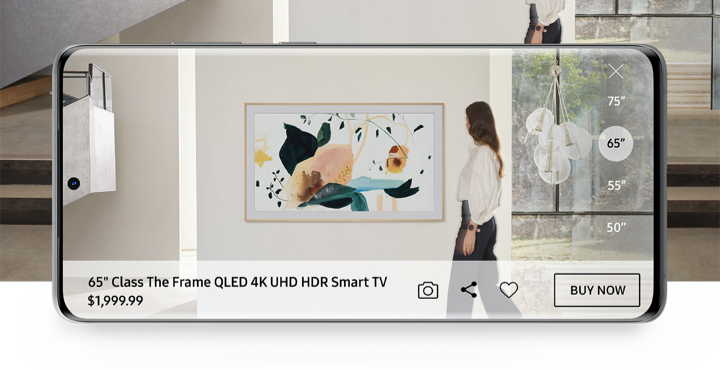
View the newest TVs in your room using our latest
Augmented Reality feature in the Shop Samsung app.

Finding the perfect fit can be a challenge. Now you can shop worry-free unlike ever before.
- Buy now by paying in full or with unbeatable Samsung Financing.
- Try out your purchase for up to 100 days, risk-free.
- Then, keep it or return it and get a full refund.
What is resolution?
Resolution refers to the number of pixels a screen can show. The higher the number of pixels a screen can show , the sharper the image quality is. Baseline full HD features 1,920 x 1,080 pixels (1080p) and there are sharper standards, QHD (2,560 x 1,440 pixels) and 4K UHD (3,840 x 2,160 pixels)

Larger Screens, higher resolution
Pixel density is another factor when it comes to picture quality. Larger screens require higher resolution to maintain the same pixel density as smaller screens with lower resolution. Monitors with higher resolution deliver crisper details and provide more screen space.

Are you Looking for a wider screen?
Most monitors feature a 16:9 aspect ratio and are suiable for content viewing and productivity work. However, new standards including 21:9 or even 32:9 a offering a wider display experience for better multitasking and improved visuals

Drops, spills, and mechanical failure are all covered so you can get back to your busy life.

Breathe easy, with convenient mail in replacement service, you're back up and running in no time.

Get immediate answers from a Samsung Care+ expert 24/7 via phone or online for device setup and connecting with other devices.
Rest assured your device will be repaired or replaced by a Samsung certified technician using Samsung Genuine Parts.
PC-like experience anywhere you go
Get that PC feeling with the Galaxy Tab S9+ / S9 FE+ Book Cover Keyboard. The full-size keycaps, function keys and trackpad, combined with DeX Mode, deliver a PC-like experience with a single tap.

On-the-go flexibility
With its magnetic design, you can easily detach and reattach the back cover to tailor your device to fit your everyday needs.**

Versatile viewing comfort
Take it all the way back to 150 degrees for a new level of freedom with the Book Cover Keyboard. Adjust the hinge on the back to find your perfect position to send emails, enjoy your favorite content and more from any angle.
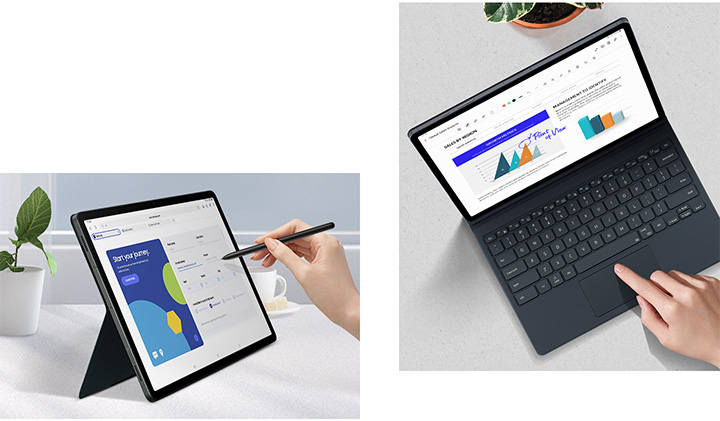
Enhance your productivity with wireless sharing
With Wireless Keyboard Sharing, you can connect to compatible Galaxy devices and type or navigate on them with ease.** It's like seamlessly switching to your phone and using it the same way as would your tablet.***

" data-link_cat="tooltip"> Product Weight
Global Download Center
SAMSUNG assumes no responsibility, and shall not be liable, in connection with whether any such products or services will be appropriate, functional or supported for the SAMSUNG products or services available in your location.
Recently Viewed
Free shipping
Extended returns, financing that fits your life.
Price, Promotion, Processing: Pricing, delivery date and other errors may be withdrawn or revised and/or your order may be cancelled at any time, without prior notice, before we have both (a) shipped or provided access to your product or service, and (b) received your payment for the product or service. All sales on Samsung.com are subject to the full Terms of Sale . Samsung is not responsible for any errors, omissions or misdirected or lost orders, or orders which may be delayed. Samsung reserves the right to modify pricing and modify or cancel promotions at any time, without prior notice.
You Are About To Be Redirected To Investor Relations Information for U.S.
Redirect notification.
- * For Samsung Supplies information go to: www.hp.com/go/samsungsupplies
- * For S.T.A.R. Program cartridge return & recycling go to: www.hp.com/go/suppliesrecycling
- * For Samsung printer support or service go to: www.hp.com/support/samsung
Select CONTINUE to visit HP's website.

IMAGES
VIDEO
COMMENTS
The Samsung crisis management case study highlights the importance of swift and transparent communication, customer-centric actions, and continuous improvement in product safety and quality. By effectively addressing the crisis, Samsung was able to navigate the challenging situation and rebuild its brand, reaffirming its position as a leading ...
This case study describes how Samsung Electronics transformed into a world-class company and the strategic challenges it faces as it looks to sustain its success in both developed and emerging markets. It has been 20 years since Lee Kun-Hee announced the New Management initiative that played a crucial role in transforming Samsung from a second-tier
Other generic competitive strategies, such as cost leadership, differentiation focus, and cost focus, are also applied in Samsung's operations, but to a limited extent. Cost focus leads to the company's being the best-cost provider in some segments of the semiconductor and electronic components markets. The limited application of cost focus ...
management will do a deep analysis of the org anization's mission, vision and the way to. use the resources to meet the objectives. Strategic planning is often done by the top management in an ...
by. Tarun Khanna, Jaeyong Song, and. Kyungmook Lee. From the Magazine (July-August 2011) Summary. Twenty years ago, few people would have predicted that Samsung could become a world leader in R ...
In January 2008, Samsung Electronics won 32 innovation and design engineering awards at the Consumer Electronics Show, the largest show of its kind in the world. Samsung Electronics' management believed that the awards were an endorsement (or "vindication") of the company's investment in product design and innovation. However, the company found its competitive advantage diminishing quickly due ...
The Wall brings design at the Hyundai America Technical Center to life. 1-10 of 105 Results. 1 2 3 … 11. In-depth case studies of Samsung business technology deployments.
In this case, students assess whether Samsung Electronics has been able to achieve such a dual advantage, and if so, how this was possible. Moreover, Samsung Electronics' long-held competitive advantage is under renewed attack. Students also can assess how Samsung should respond to large-scale Chinese entry into its industry.
Samsung Electronics, a successful global company based in South Korea, aspires to "Tier One" status among its competitors through mastering the less tangible, more intuitive qualities of superior design. This case study takes students through Samsung's rise in little more than three decades from a small OEM producer of generic TV sets to a giant in numerous product categories, from components ...
In this study, the case of Samsung Electronics (SE), now the largest electronic firm in the world from a former emerging economy, is examined to unveil the processes of harvesting and planting innovation and their results. Innovative activities have been the core strength of SE and are expected to continue creating value for SE.
Let's start the detailed case study from here. Samsung entered the electronics industry in the late 1960s and the development and shipbuilding ventures in the mid-1970. Following Lee's demise in 1987, Samsung was divided into five business groups - Samsung Group, Shinsegae Group, CJ Group, Hansol Group and Joongang Group.
With global studios in Seoul, Korea, San Francisco, U.S. and Milan, Italy, the Experience and Insight Lab (E&I Lab) - a new division of Samsung Research, an advanced R&D hub that leads the development of future technologies for Samsung's consumer product business - was created to help bring that future to fruition.
Executive Summary This study evaluates the corporate strategy of Samsung Electronics, a multinational company, with operations in 80 counties, and a global market leader in several business ...
Samsung E lectronics developed a global strategy. It can be described, on the one hand, as a high. rate of global inte gration and cost efficiencies and on the other hand as q uite a low ...
Case Study S&OP and S&OE in a unified environment Just as important, higher inventory levels (including obsolete materials), some supply shortages, delays in identifying bottlenecks, lengthy forecasting cycles, and too many rush orders were also combining to prevent Samsung from achieving even greater levels of efficiency, customer service,
The winner of South Korea's presidential election, Moon Jae-in, is coming to power in the wake of a corruption scandal that ousted President Park Geun-hye. Her impeachment followed the arrest of ...
By eSoft Academy January 2, 2024. Samsung Electronics, a global leader in consumer electronics, has long been recognized for its commitment to innovation and quality. However, like any industry giant, the company has faced its share of quality improvement challenges. In this case study, we will explore how Samsung Electronics identified ...
For two days in late May 2012, Apple CEO Tim Cook and Samsung CEO Gee-Sung Choi met with a judge in the U.S. District Court of Northern California in an attempt to reach a settlement in a high-profile U.S. patent case, a sobering example of negotiation in business.
Digital line. Conclusion. Before we look into Samsung's digital marketing strategies, A recent study revealed that Samsung is all set to lead the worldwide smartphone market in 2022 with yearly shipments of 272 million devices. 272 MILLION! Samsung inculcated innovation each step of the way and used smart branding to position itself in the ...
In this blog, the main elements of the 6G Framework Recommendation are introduced, including the future plan. Samsung was a leading contributor to this global activity and HyoungJin Choi of Samsung Research chaired this activity within this working party. 1 The International Telecommunication Union (ITU) is a specialized agency of the United ...
Visit profile. Reference Rating 4.7 / 5.0. Customer References 262 total. About. NEC Display Solutions of America, Inc., a leading designer and provider of innovative displays, offers the widest range of products on the market, such as commercial- and professional-grade large-screen LCD displays, desktop LCD monitors, direct view LED displays ...
The business covers electronics, finance, machinery, and chemistry (Samsung, 2019). The Samsung Group was founded in 1938 by Lee Byung-Chull (Samsung, 2019). Each of its Samsung industries is a family business and is managed by other members of the family. In the early 1990s, Lee Byung-Chull was dissatisfied with the company's product quality ...
Otterbox Prefix Series for Galaxy A35. Best overall. $21 $40 Save $19. Otterbox is well known for its sturdy cases and is one of our favorite casemakers. The Prefix is a hard case with a soft grip ...
The case focuses on three pivotal moments of the Lee family's leadership of the Samsung Group: the leadership transmission from the founder Byung-Chul to the second generation; the hospitalization of the visionary leader Kun-Hee and the succession to the third generation; and Jae-Yong's arrest and later conviction, causing a leadership ...
Fintie Hybrid Slim Case for Galaxy Tab S9 FE+. Best value. $17 $19 Save $2. The Fintie Hybrid Slim Case installs easily, has a transparent back shell that safeguards your tablet against scratches ...
Spidercase for Samsung Galaxy A35. $15 $16 Save $1. Spidercase's rugged case is not messing around; it passed military-grade drop tests, surviving drops from up to 12 feet. Its unique design ...
A Client Case Study. One of our clients, a premier window and door installer with a new franchise in Raleigh, North Carolina, faced a challenging competitive environment dominated by established ...
OtterBox Commuter Series Lite for Galaxy A15. $24 $30 Save $6. The OtterBox Commuter Series Lite is a high-quality Galaxy A15 case that offers top-notch protection. It does feel a bit bulky, but ...
Book Cover Keyboard for Galaxy Tab S9+ / Tab S9 FE+. EF-DX815 / EF-DX815UBEGUJ. 3.9. (70) Write a review. Share your product experience. • Protect your tablet — and create more — with a cover that doubles as a keyboard. The Book Cover Keyboard is made sturdy but lightweight to attach easily to your Galaxy Tab S9+ and Galaxy Tab S9 FE+ so ...